After a pleasant overnight ferry trip from Tokyo, it’s
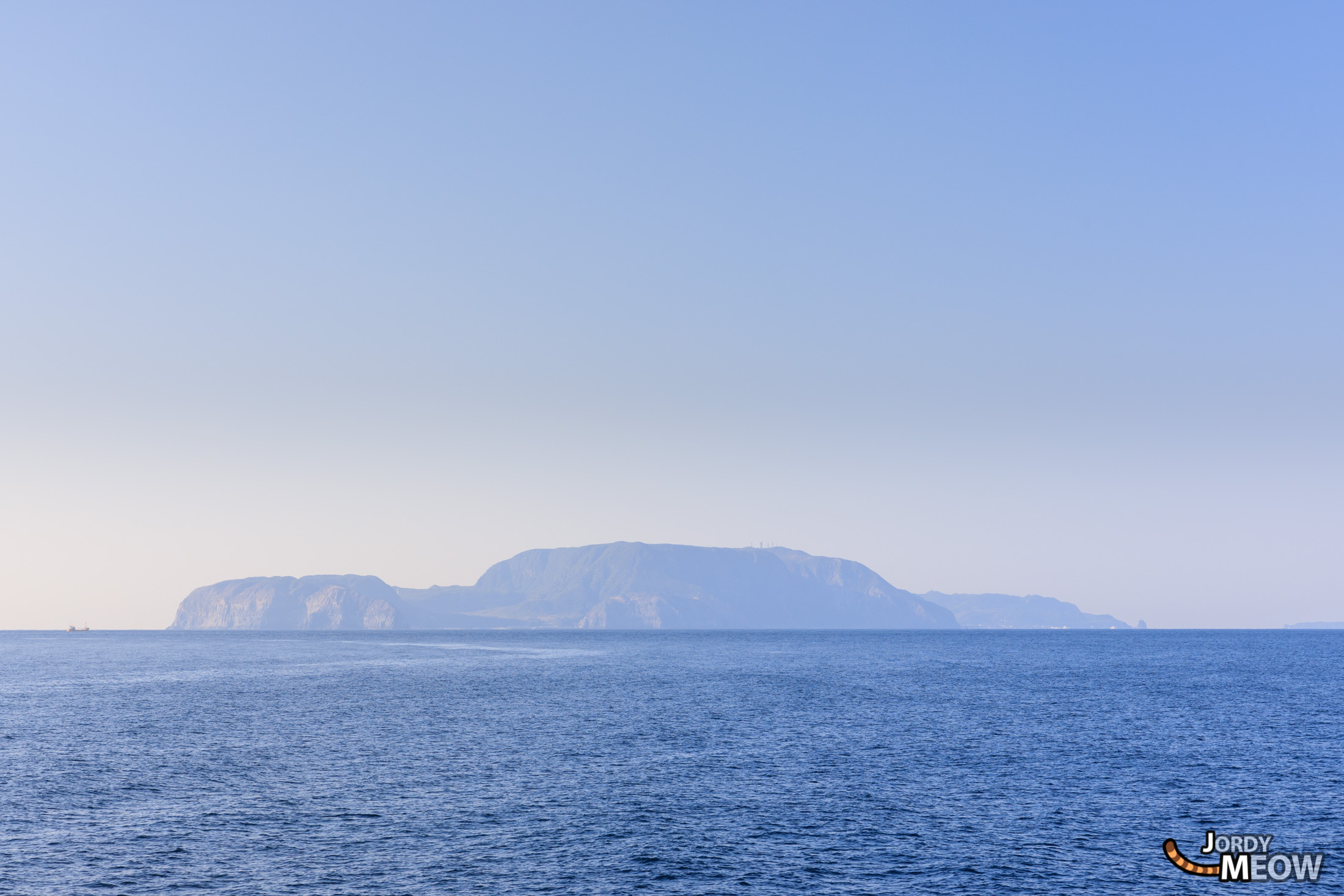
I don’t want to bore you with scientific explanations, which are beyond me anyway, but rhyolite is similar to granite in composition. The difference? Granite is formed by very slow cooling of magma at depth, rhyolite is formed on the surface from a volcanic eruption. So the resulting rhyolite crystals are much finer. And koga rhyolite is “Made in Japan”, so it must be better, right? 🙂
Shine, Wind & Wave Tower
Once the ferry has docked, I wonder how best to continue: by car? cycle? on foot? There’s plenty to see on the island, and it’s fairly mountainous. I go and think it over in the shade of a monumental flight of steps.

The name of these steps seems to represent the key elements of Niijima: light, wind and water. It’s an island of surfers! But what about the koga? It’s OK, these steps are 100% koga! From the top, Greece seems not so far away after all …

I opt for the most beat-up car from the most outlandish rental. An hour later a guy turns up with an old banger on worn-out wheels at an unbeatable price: 10,000Y (80 euros) / day. The good news: the only condition is to get it back to him in working order 😎
Omine observation point
I don’t have a moment’s regret about my luxury banger. She willingly carries us up to the heights to enjoy the cool colours of the morning.

This observation point at Omine, which doesn’t seem to get many visitors, offers a breathtaking view over Niijima. The harbour and main village are on the left.
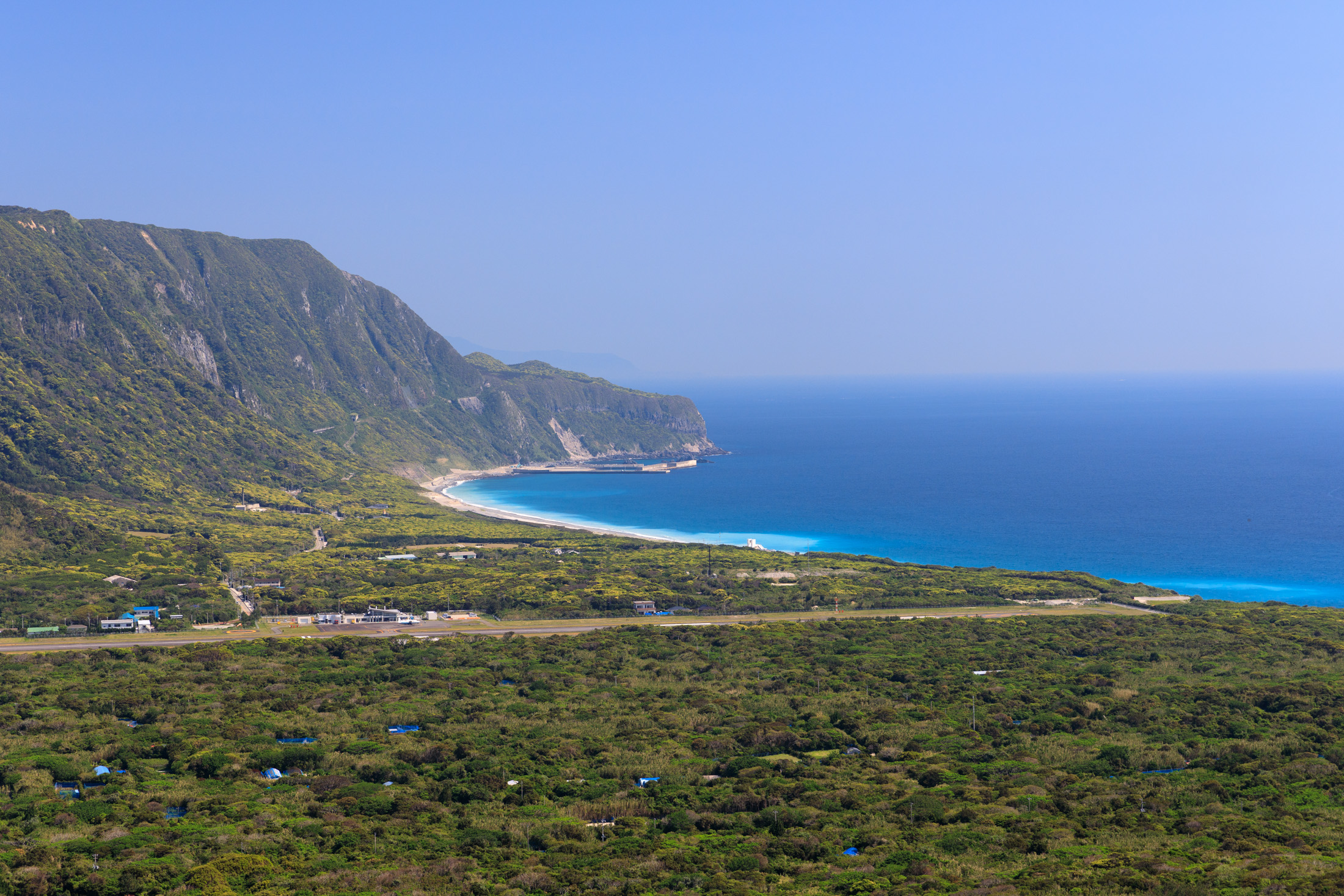
The beaches are on the right. The airport’s one and only runway literally cuts the island in two. A tunnel runs through the rocky massif opposite to the tiny village of Wakago.
Ishiyama observation point
A few minutes away, among the quarries, is a spot famous for its
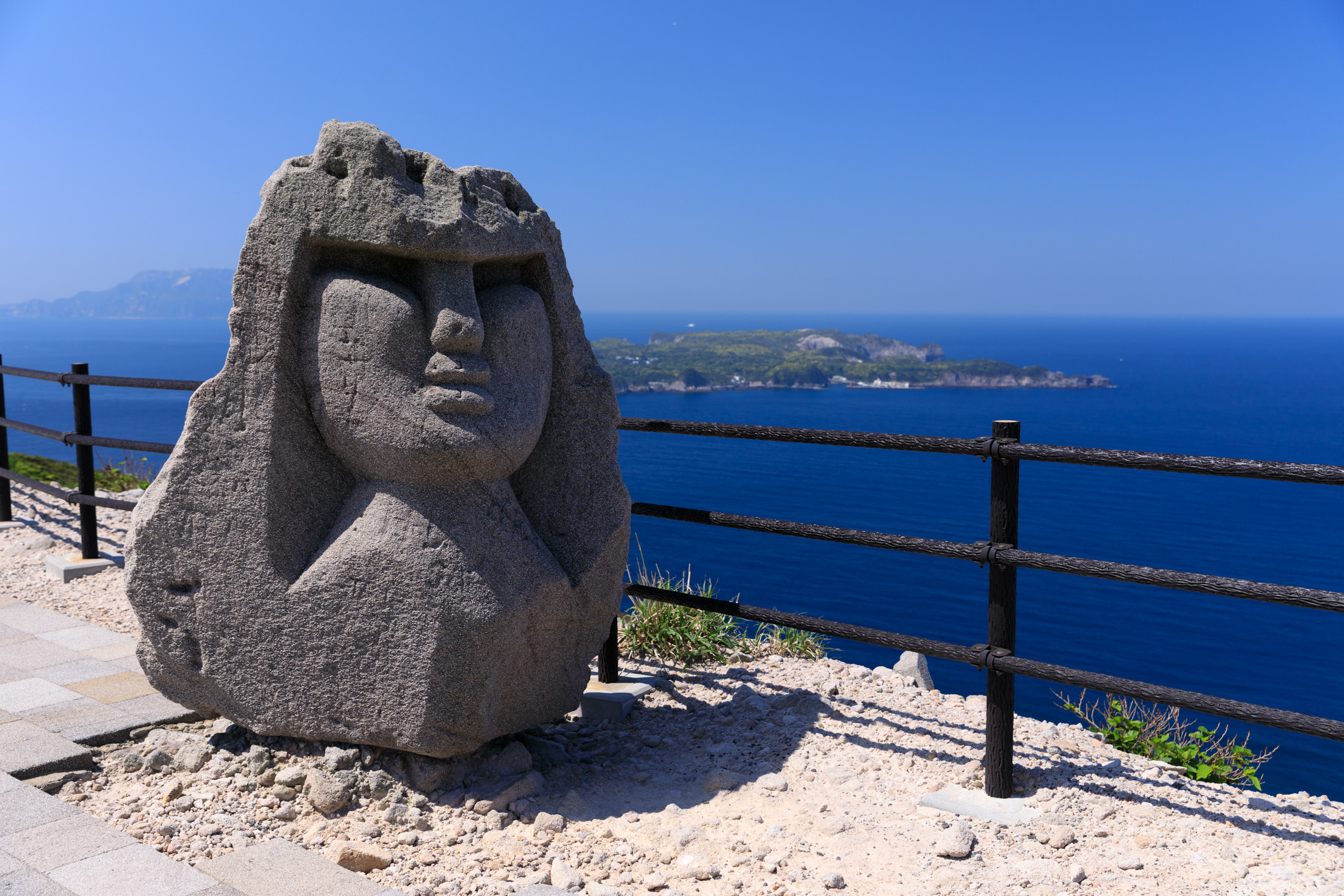
Looking north, the view is not so clear as from the previous viewpoint, although part of the port can be seen.
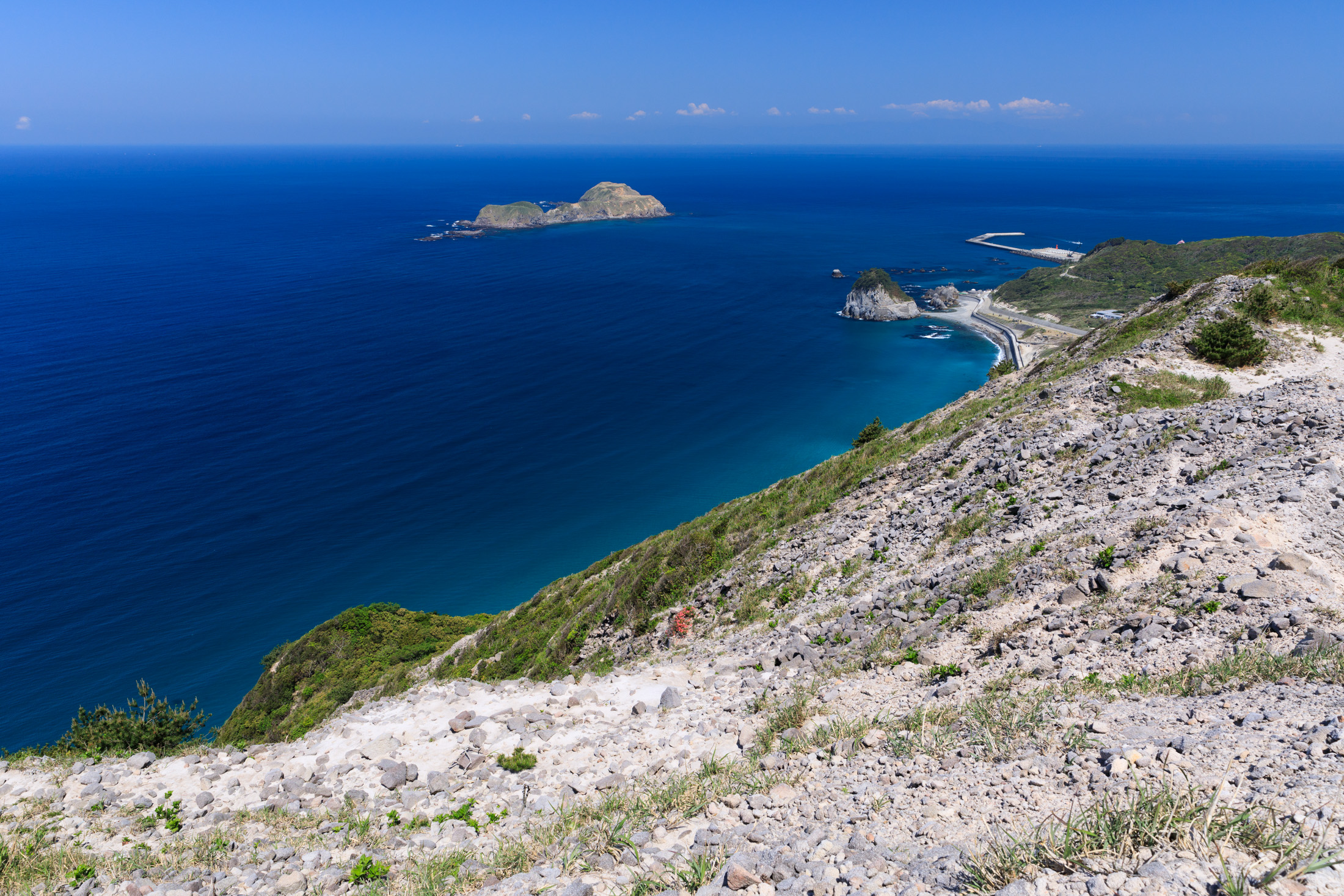
Fujimi Pass observation point
Go on, one more viewpoint, this time right in the middle of the island. We pick out Shikinejima in the distance and Niijima’s main village in the foreground.

On a clear day you can see the Izu Peninsula (described in my article One Day in Izu Peninsula) and even Mount Fuji. This photo isn’t so good – best to visit either very early in the morning or at sunset.
Niijima Water Park
The old banger bounds and bounces along. The bumpy roads of Niijima hold no surprises for her! After a Hollywood-style skid, she stalls at the far end of an empty car park. The doors open, and the sound of the engine gives way to birdsong and waterfalls.
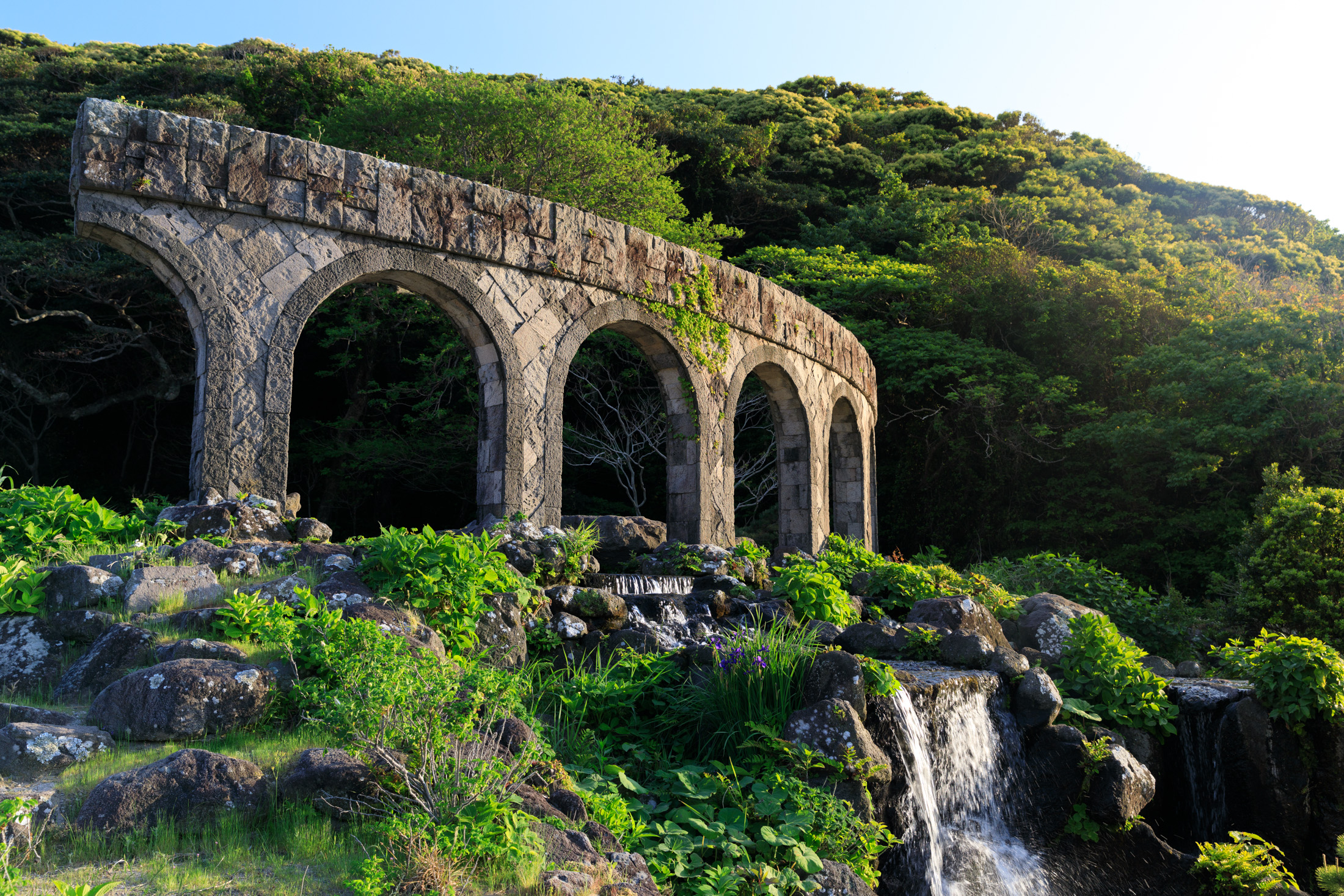
Pseudo Gallo-Roman structures stand around in a kind of Garden of Eden. Satisfyingly cute. The place doesn’t seem to have any particular theme, other than representing the harmony between

This is an ideal family park. In Tokyo, it’d be a resounding success!
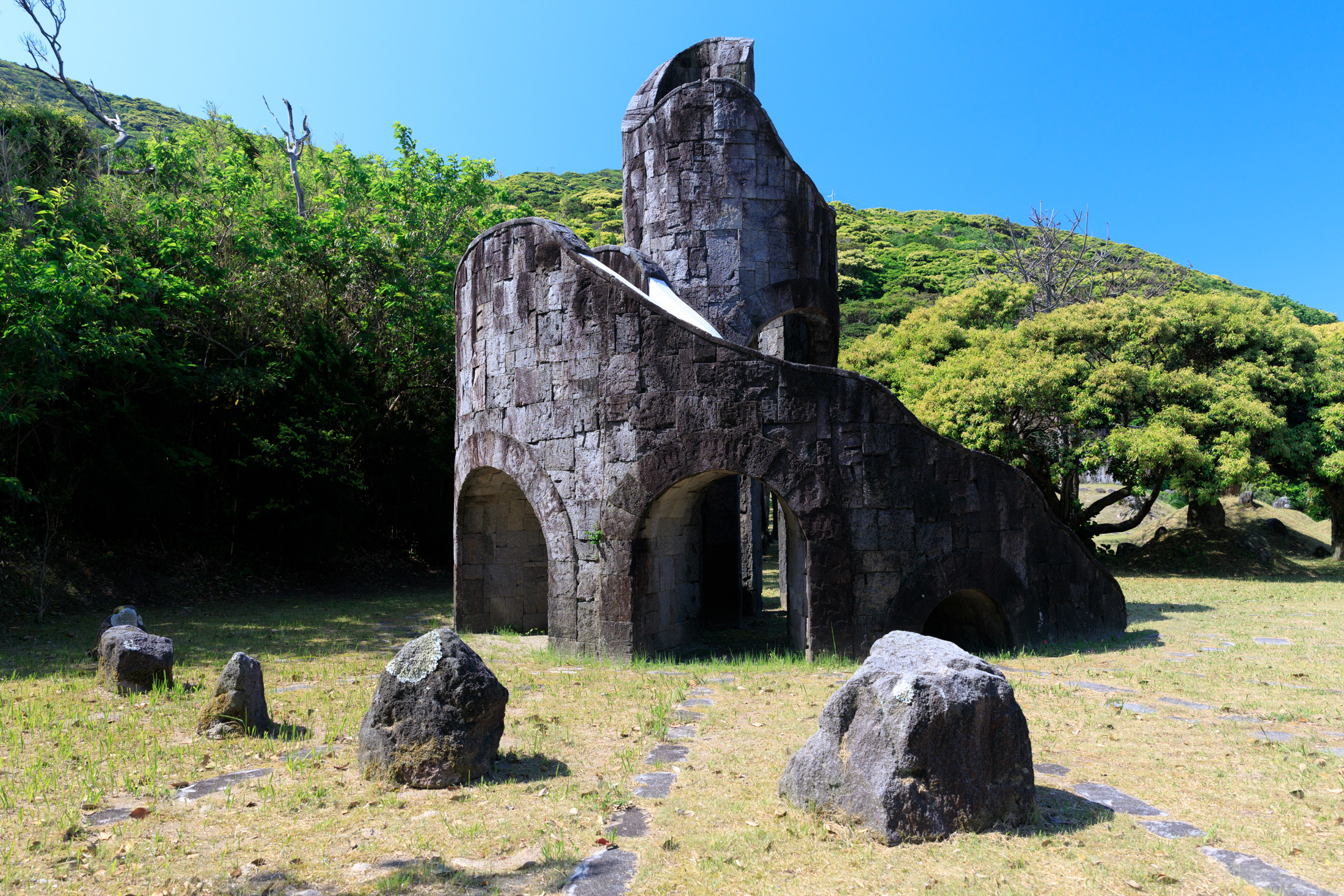
Moai statues
I’ve always been curious to go to Niijima and hunt out its moai statues, which are dotted all over the island.
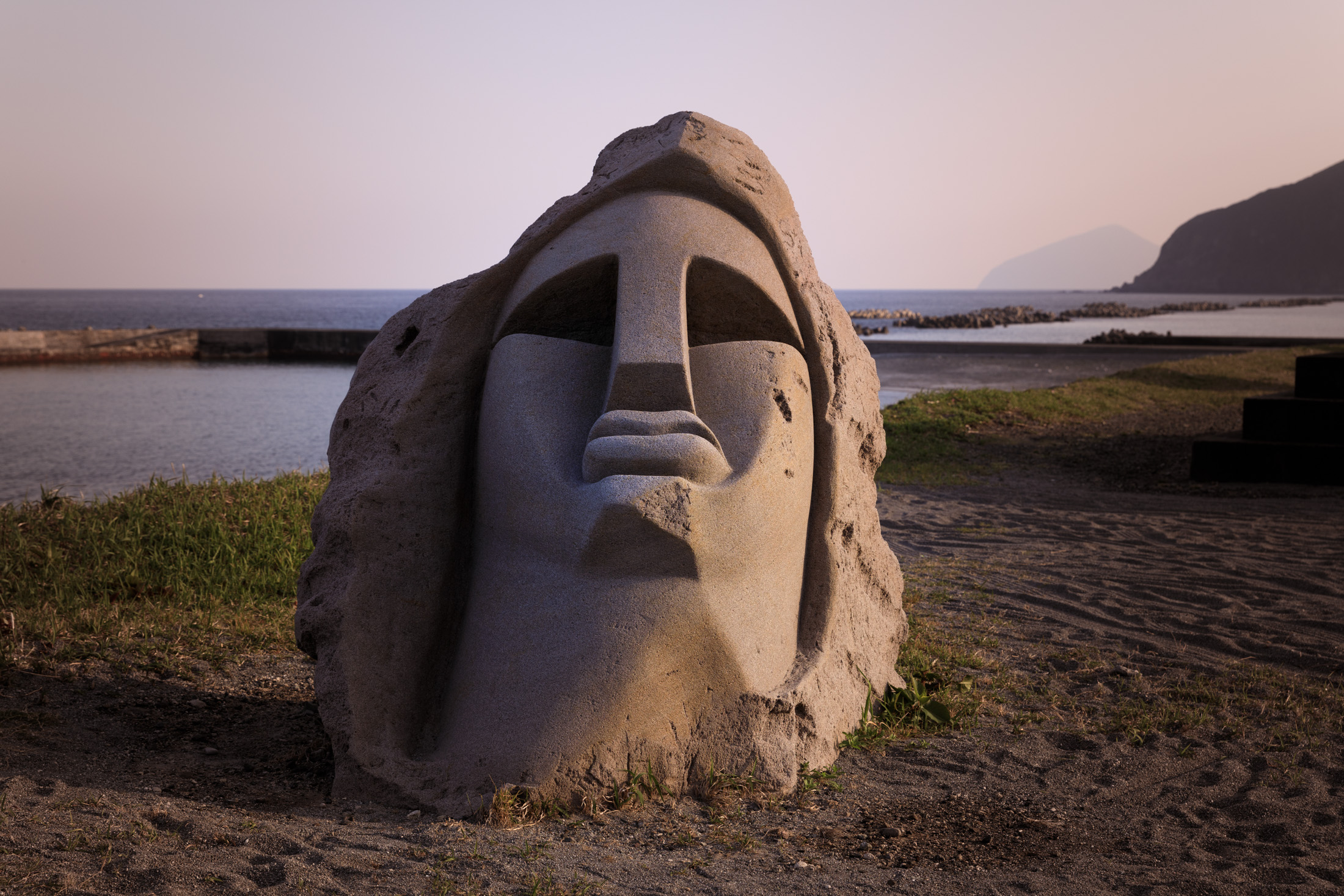
They are of course inspired by the Easter Island statues, and the most famous of them all is actually not on Niijima, but at Tokyo’s Shibuya station!
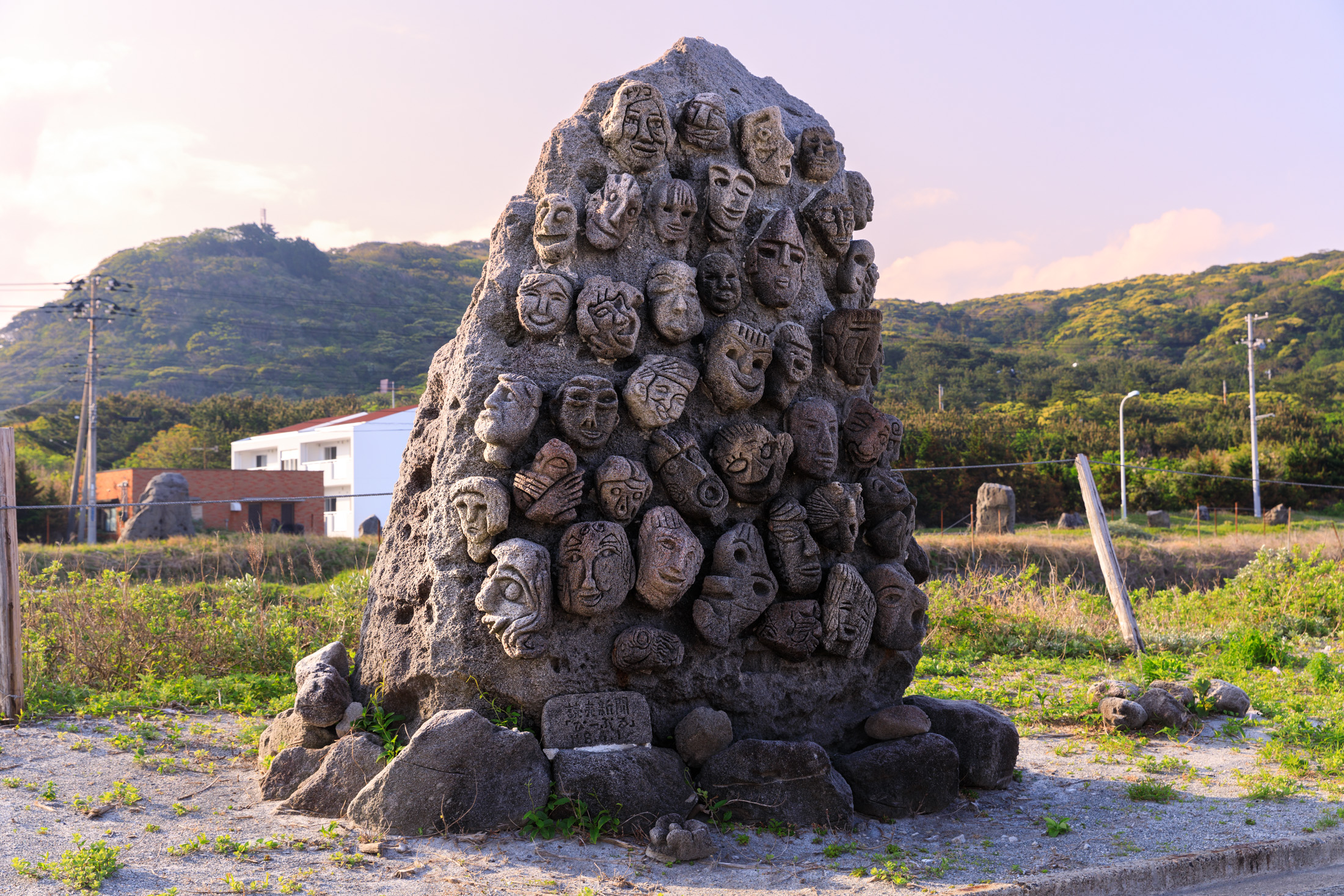
The creator of these statues is Yuichi Daigo. He wanted a powerful symbol for Niijima, as a tourist attraction.
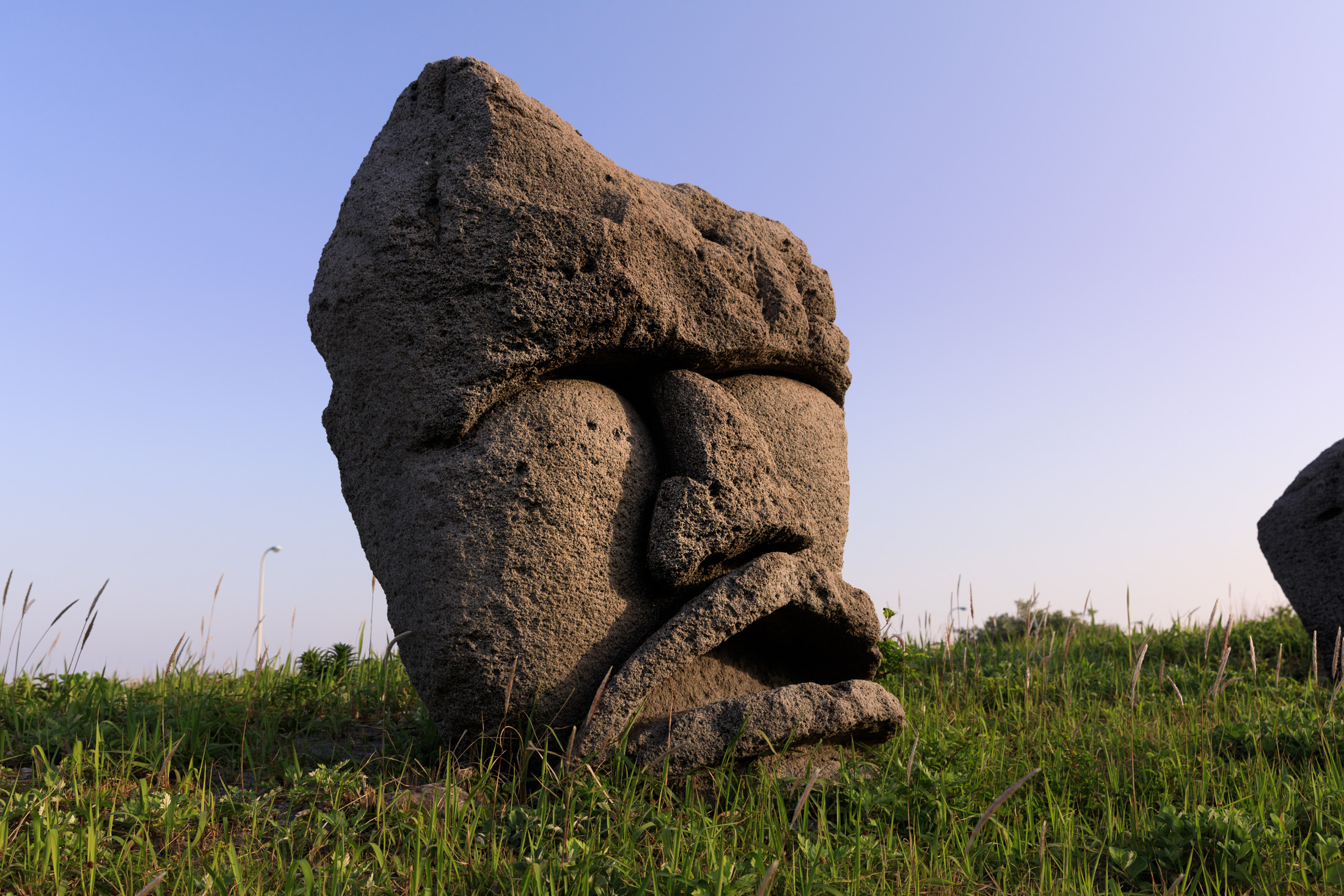
Since the 60s, and despite their many critics, the statues have been erected by Yuichi and his friends, 100% koga.
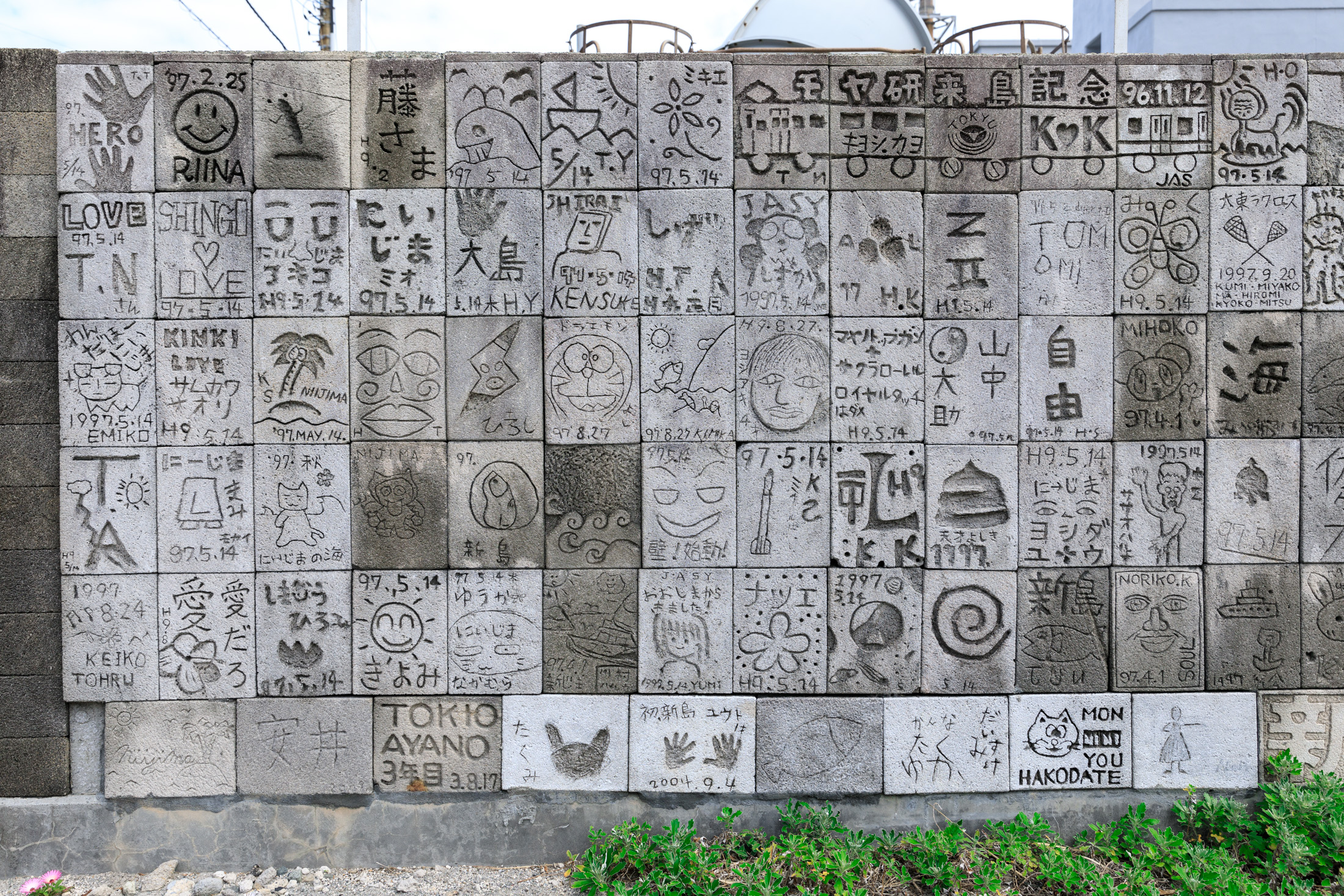
Niijima village
Let’s face it, the island’s main village is nothing to write home about. The houses are mostly concrete (rather than koga …), for its weather-resistant properties.
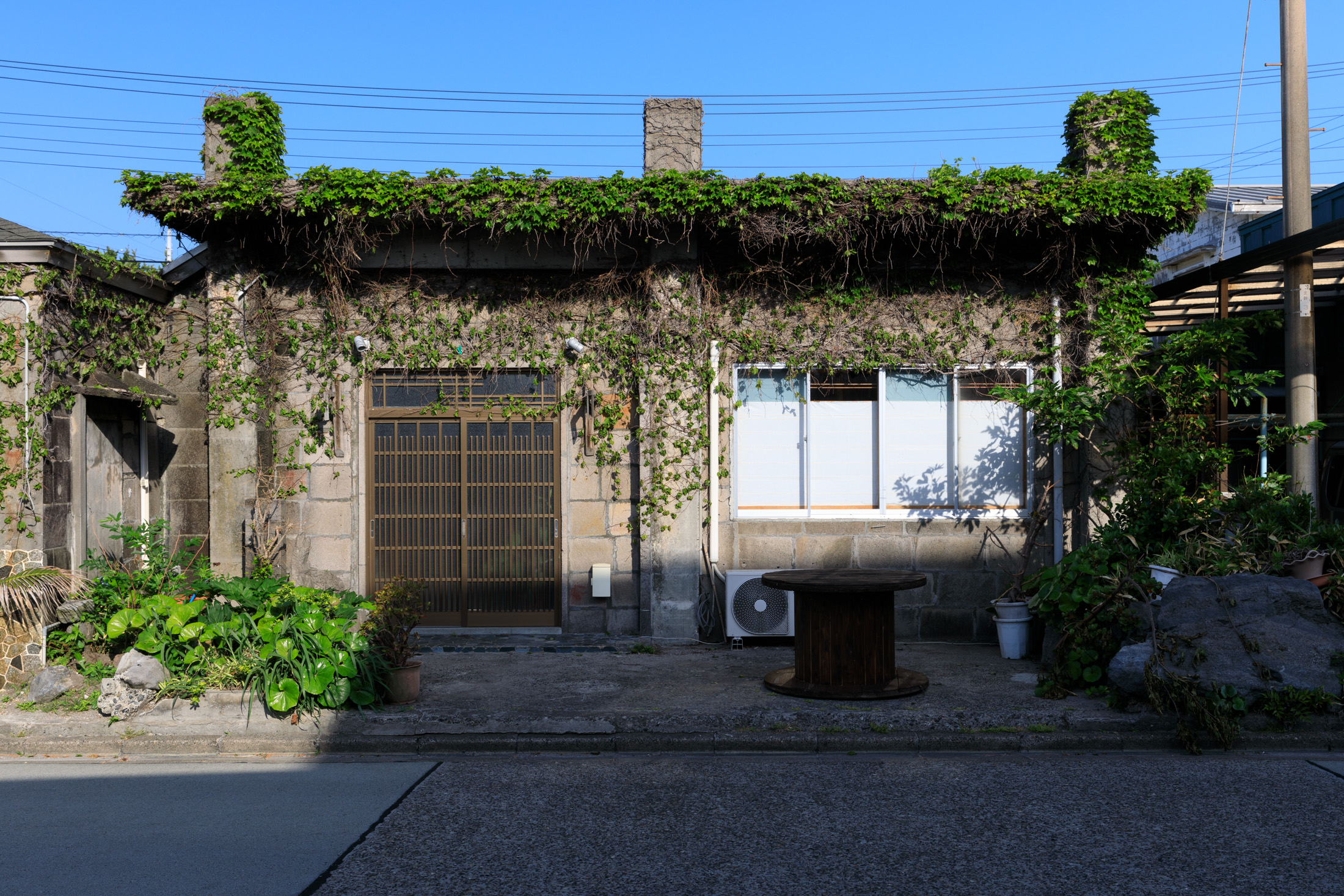
There’s nothing special about it apart from this strange igloo, a few abandoned houses, a bakery (saved my life every morning), the very rare ryokan (traditional inn), mini-hotels and 7–8 restaurants altogether.
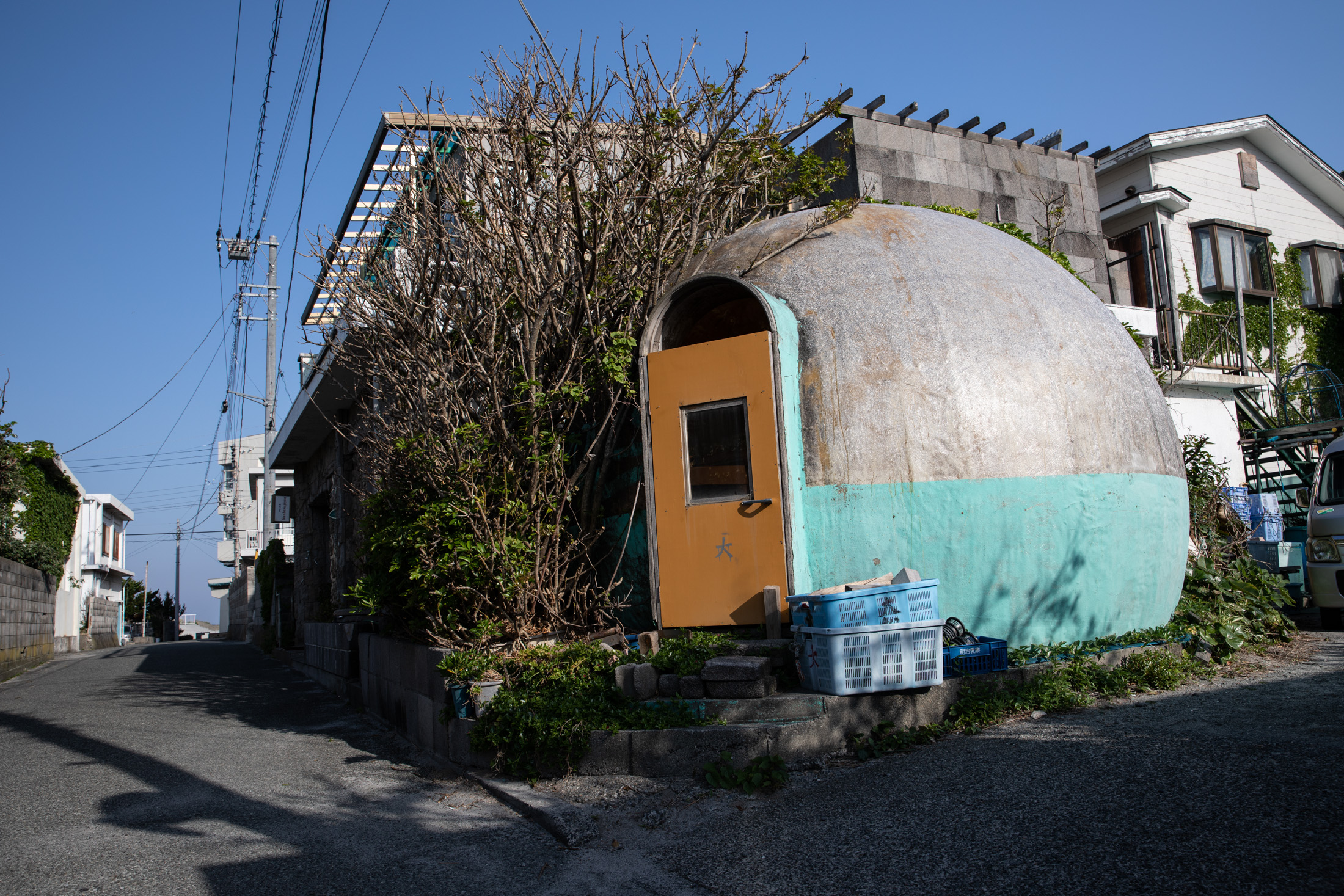
No combini stores, no banks. In the evening, tourists wander desperately through the streets in search of food. You absolutely have to book in advance.
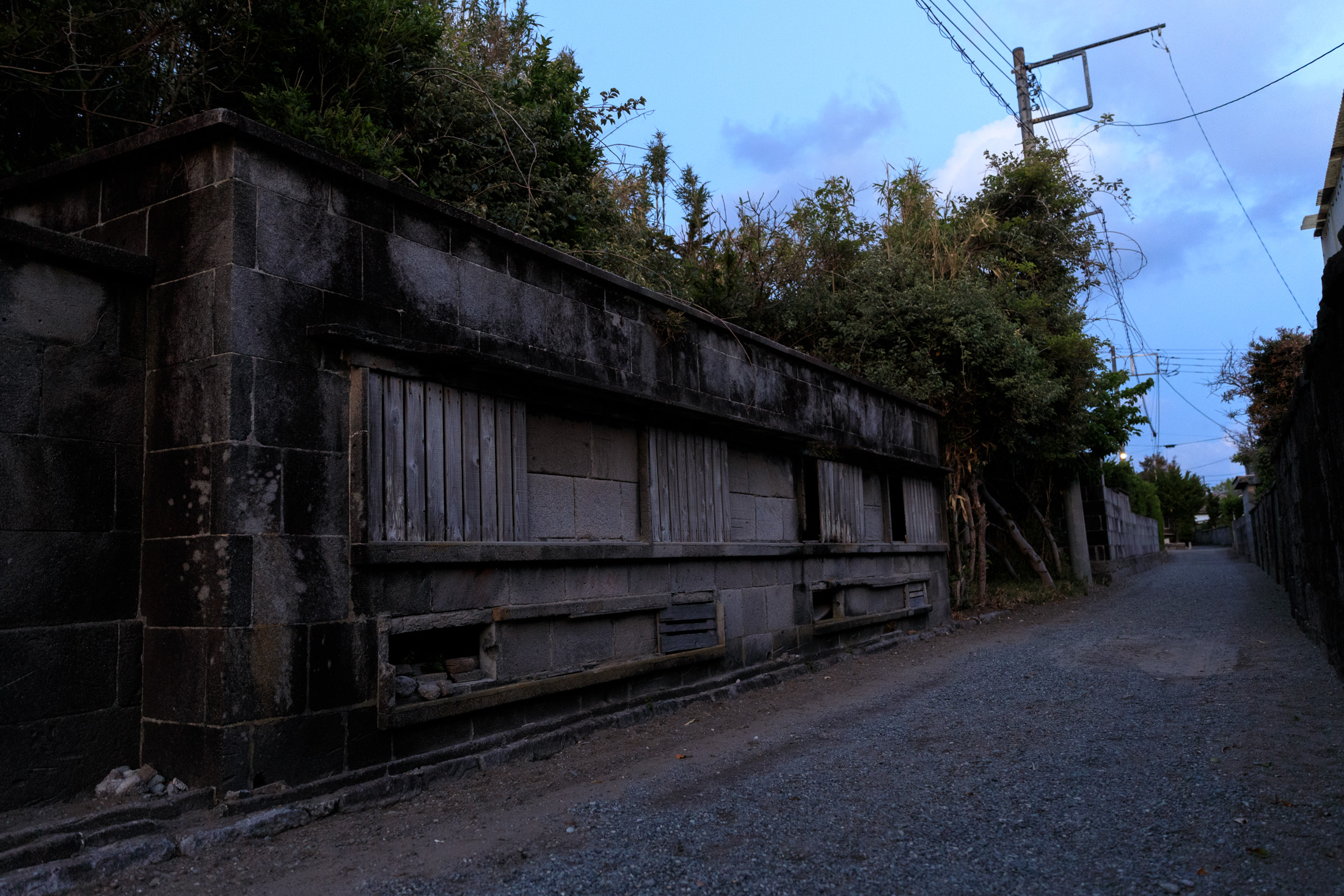
Luckily, we’d booked the best sushi on the island! Will it live up to our expectations?
Sakae Sushi (栄寿司)
The interior is devoid of charm. It seems to have been hastily extended to fit in more customers. However we’re seated at the counter (much better to appreciate the chef at work) and the dishes are something else. Below is shimazushi, a speciality unique to the Izu Peninsula, white fish marinated in a secret soy sauce and finished off with a dab of mustard. Delicious …
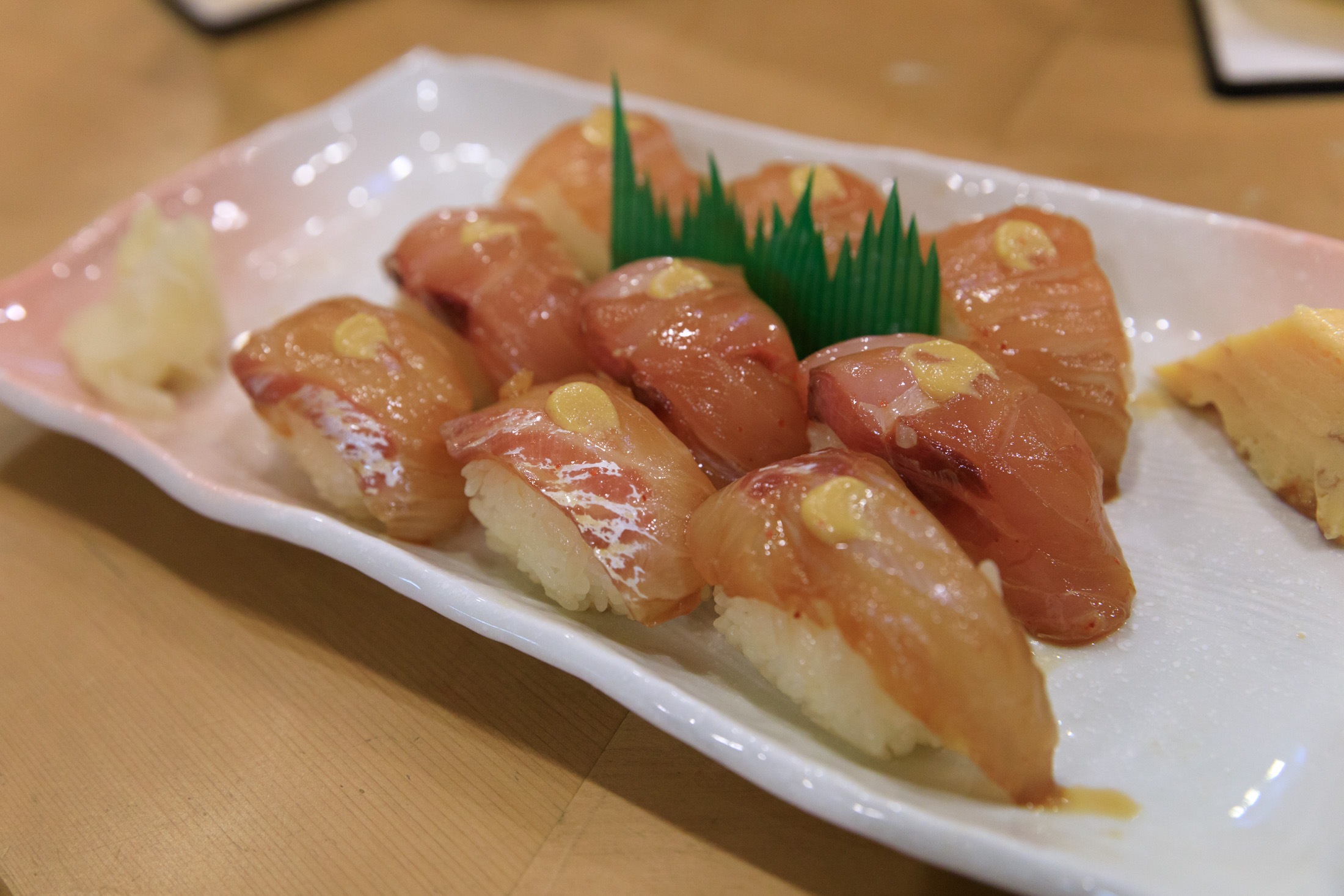
Another dish I particularly loved was the ashitaba tempura (明日葉), made from a slightly bitter local plant fried al dente. A pleasure to nibble with nihonshu! But … don’t you have anything made from koga at your place, Mr sushi-chef? Not even a koga-cola? Sorry 🤭
Night over Niijima
23h, everything closed, it’s a total blackout. I have no particular advice on somewhere to stay over. I really enjoyed my night in the Ono-ya boarding house (旅館大野屋) but wasn’t keen on the Niijima Grand Hotel (新島グランドホテル) – really outdated, despite the disarming staff.
Yunohama Roten
It’s morning again. After something to eat at the only bakery on the island (Kajiya Bakery), I head for Yunohama Roten, Niijima’s famous rotenburo (open-air baths).

A crowd gathers there at sunset, but in the morning around 7am there’s nobody about. It’s open 24/24, so for anyone who happens to be there at night, that must be the best time! ✨
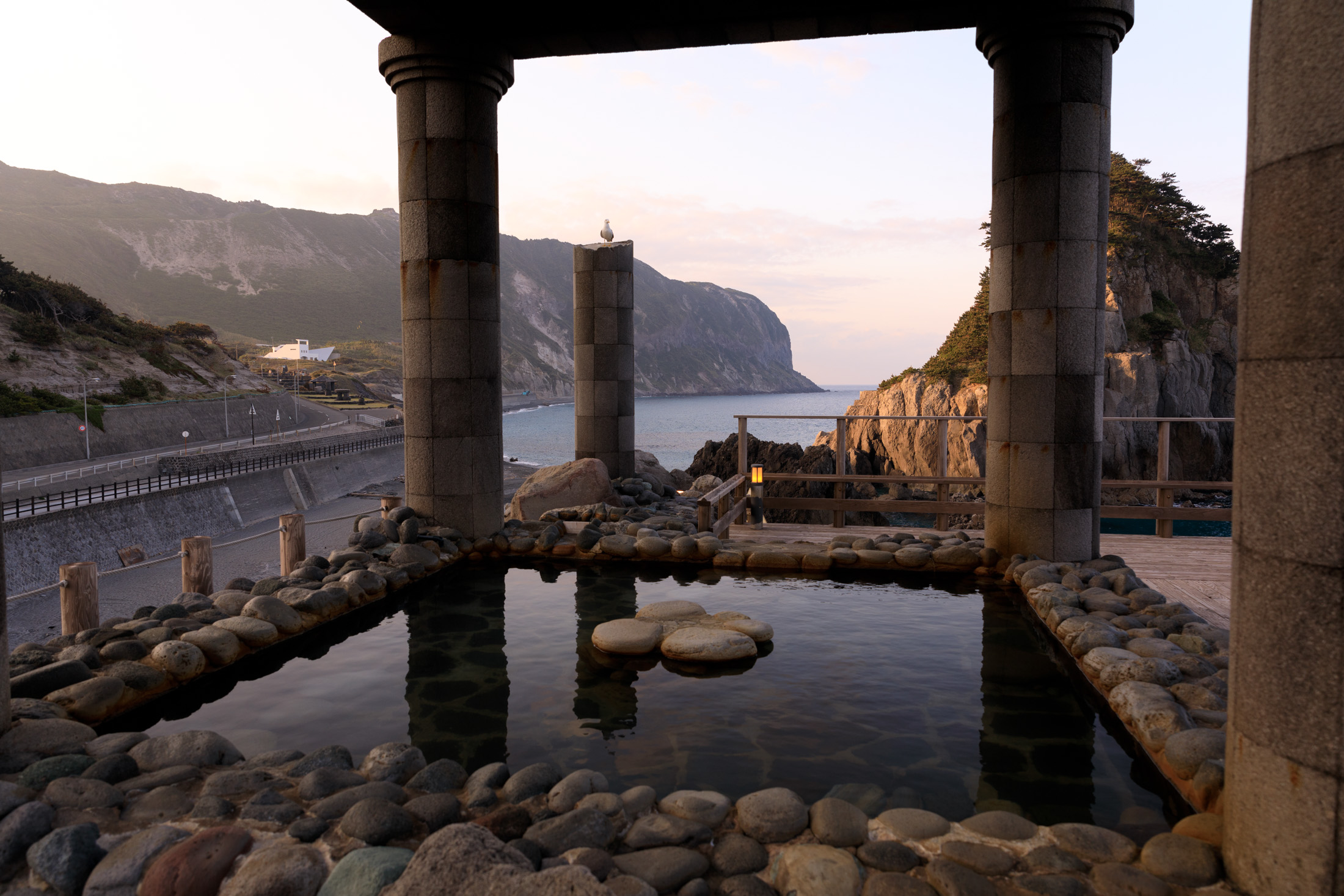
There is another onsen (hot spring), which has an entrance charge and seems rather old-fashioned, just opposite. If you need to wash, have a massage or a mud bath, it’s more suitable.
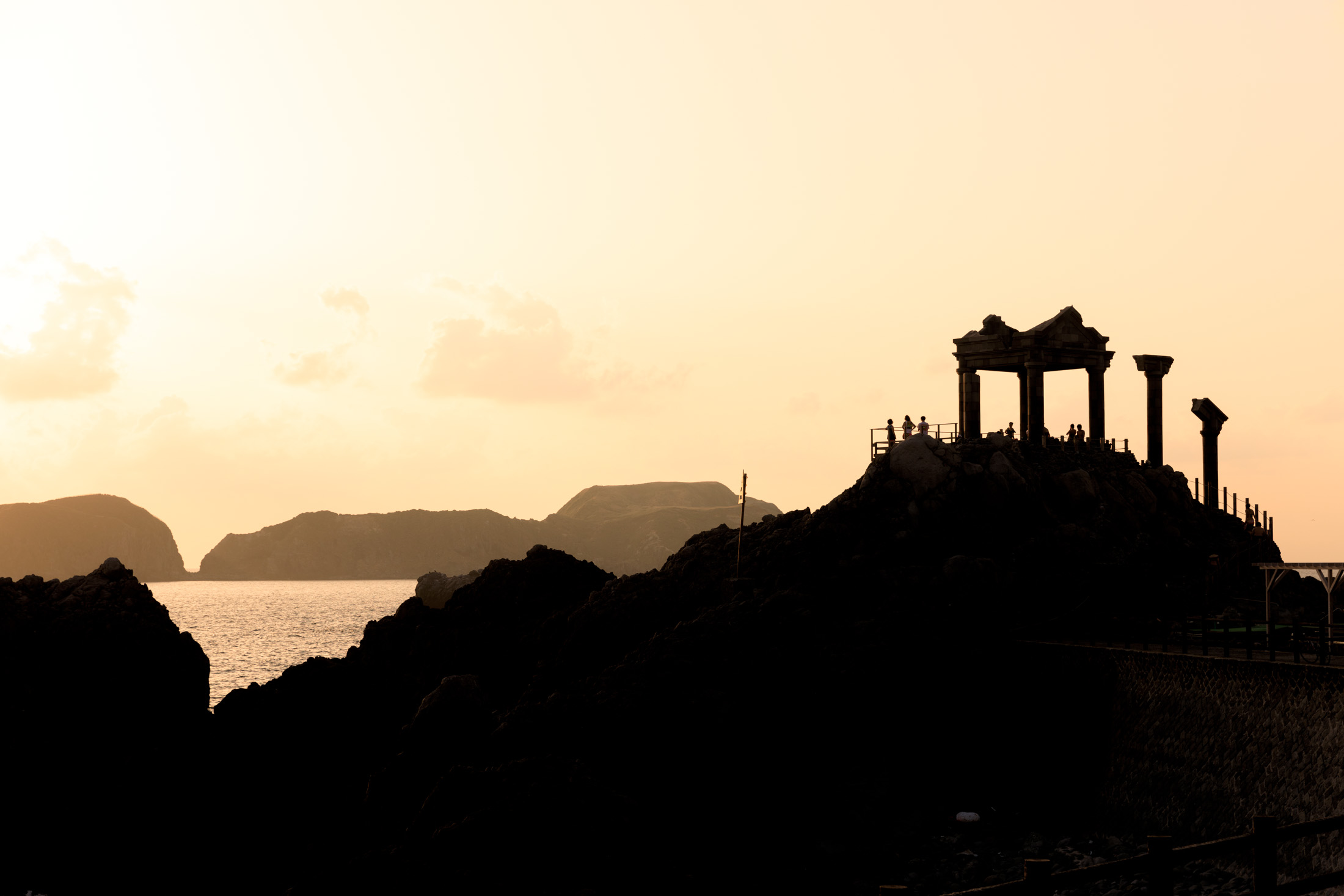
A series of koga sculptures are lined up along the shore beyond the onsen.
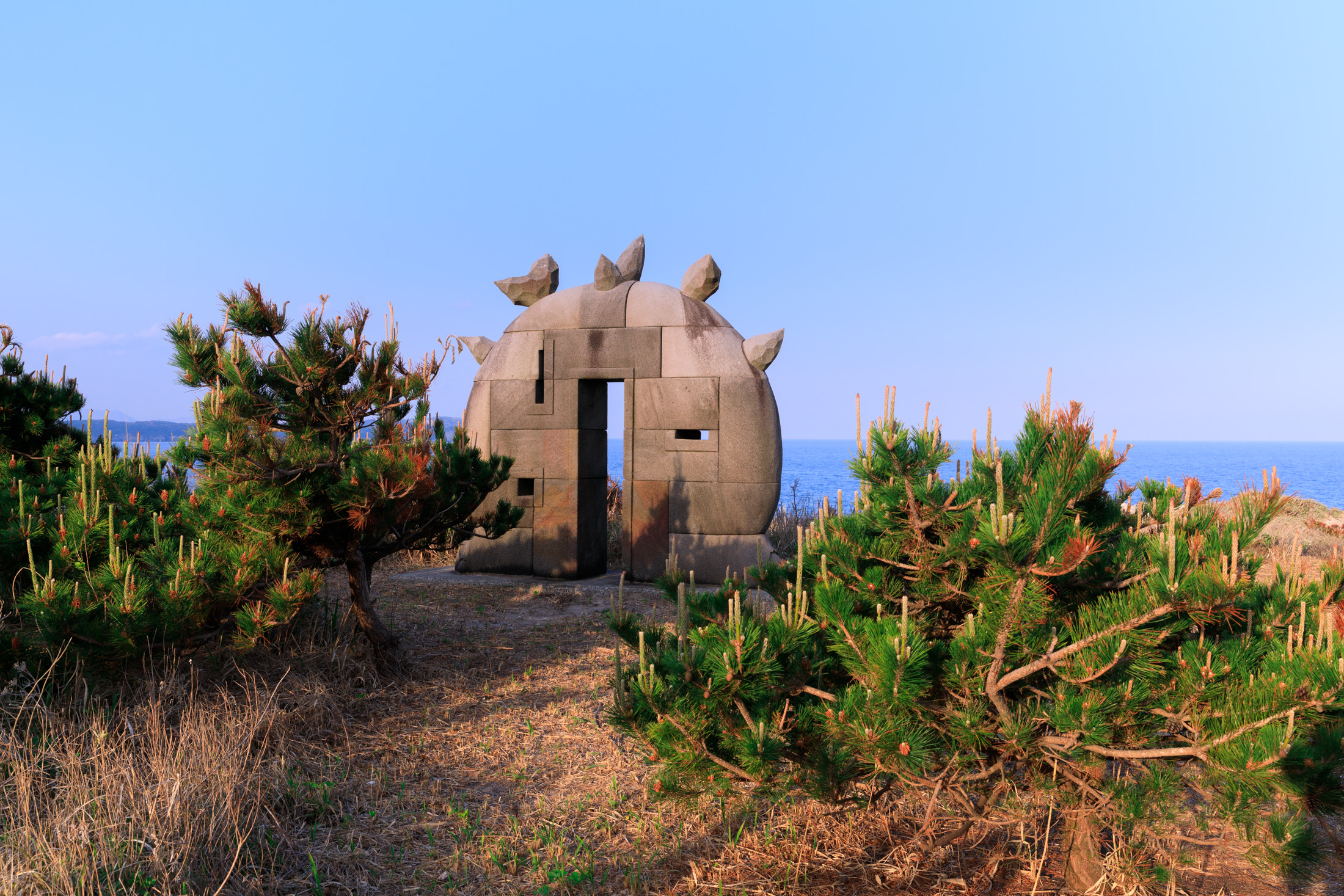
Runin Cemetery
Another Niijima curiosity is this pretty cemetery with its narrow paths of white sand. The contrast of light and colour is fantastic.
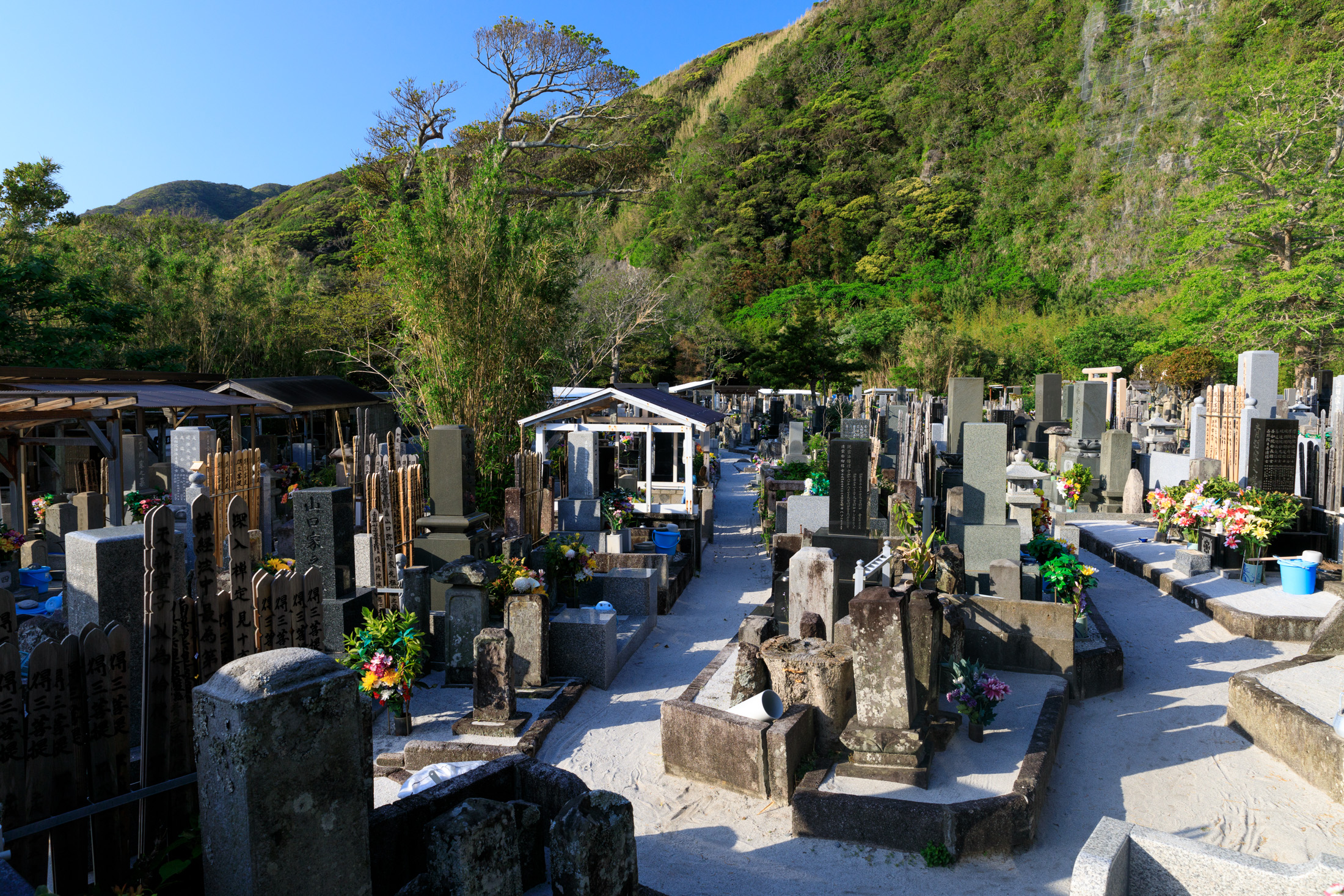
The villagers probably can’t wait to move in! This cemetery is a much happier place 🤫 I wonder if the gravestones are made from koga.
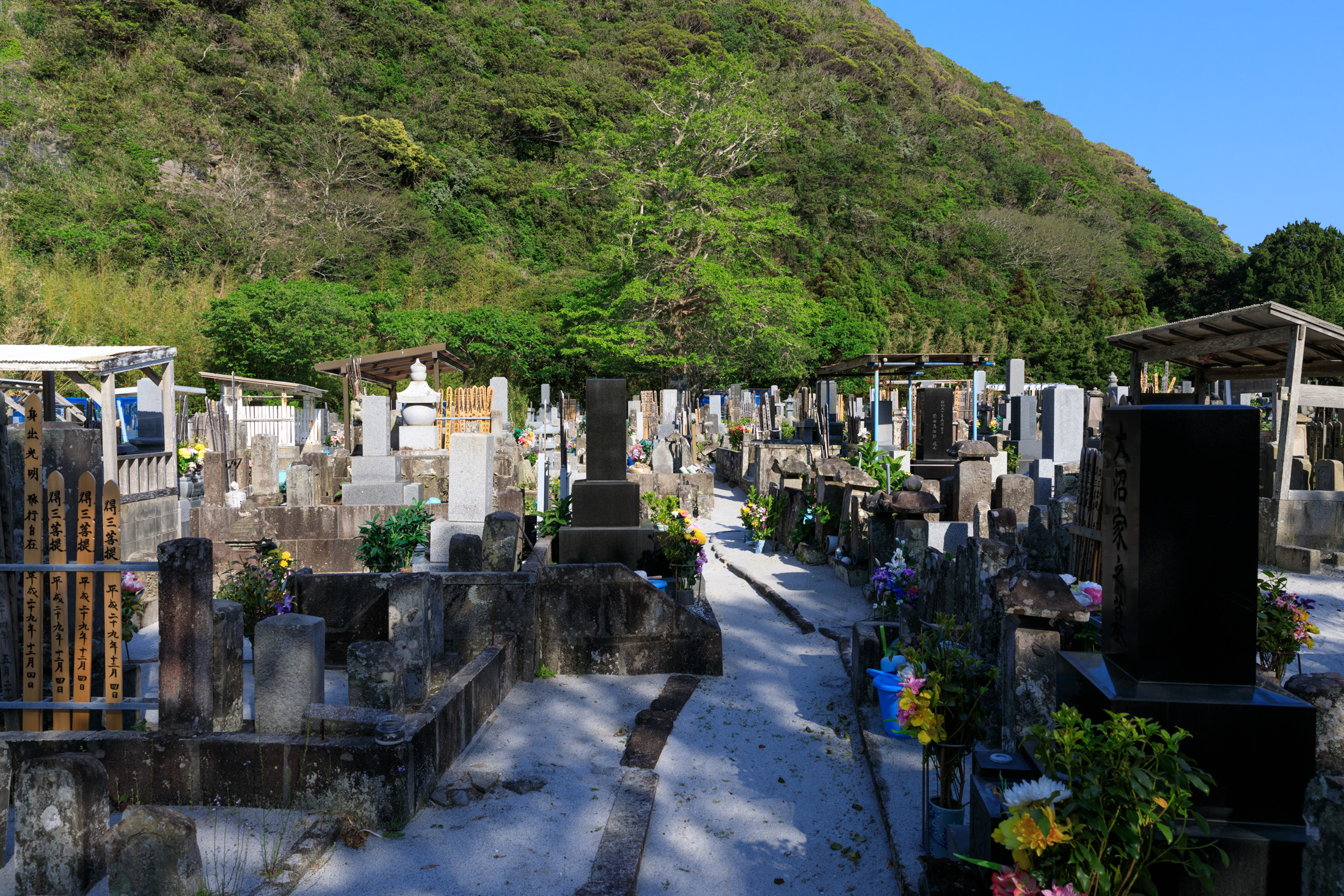
Below is another cemetery: for the exiles. During Japan’s Edo period, criminals of all classes were banished to the Izu Peninsula.
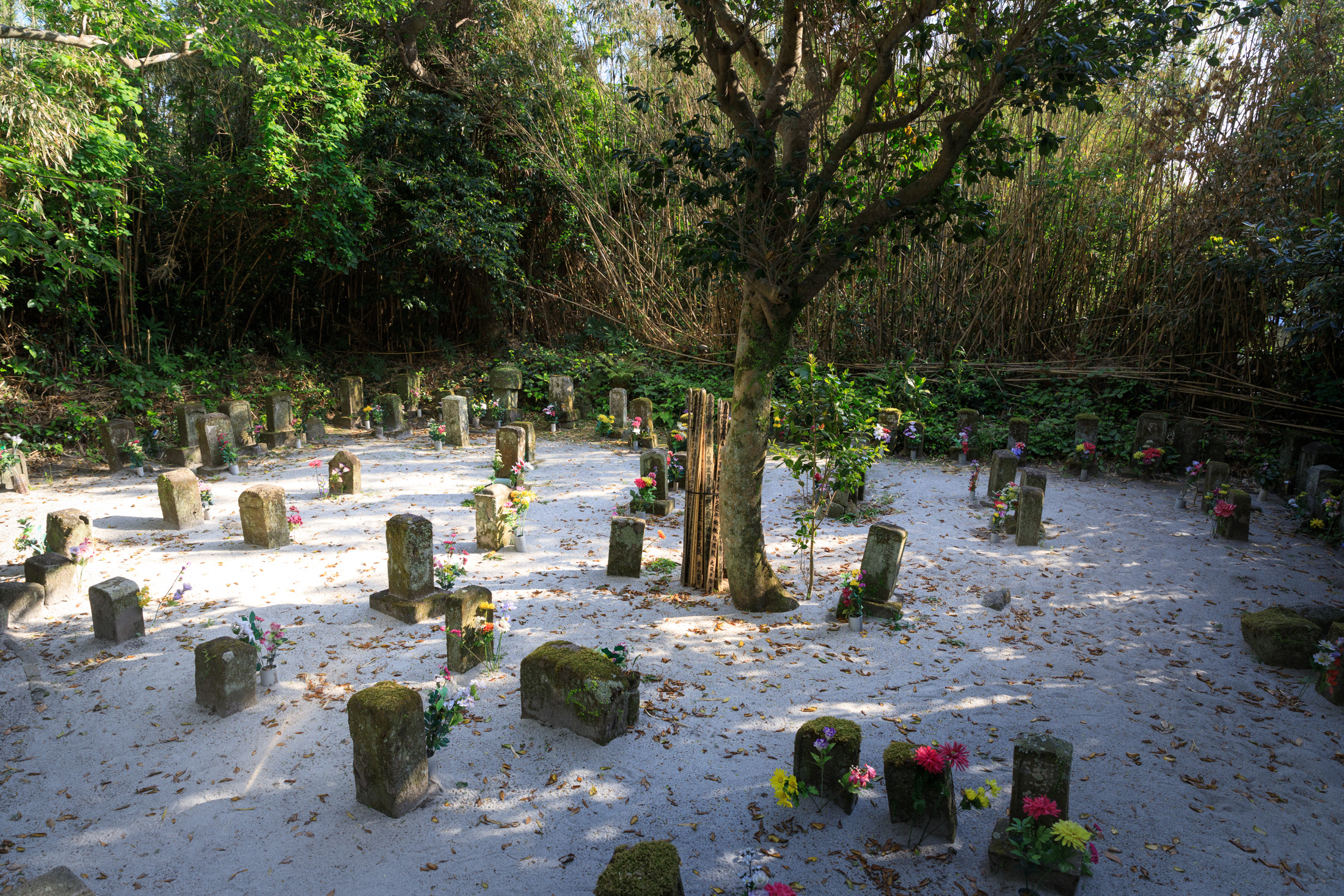
Not bad, the Exiles’ Cemetery, is it? Some of them were in fact highly respected. They brought previously inaccessible know-how to the local people, particularly in the medical and educational fields.

Here’s a little diversion if you’re on the island. Look out for this weirdo animal and his peace pipe! Want a clue? Below.
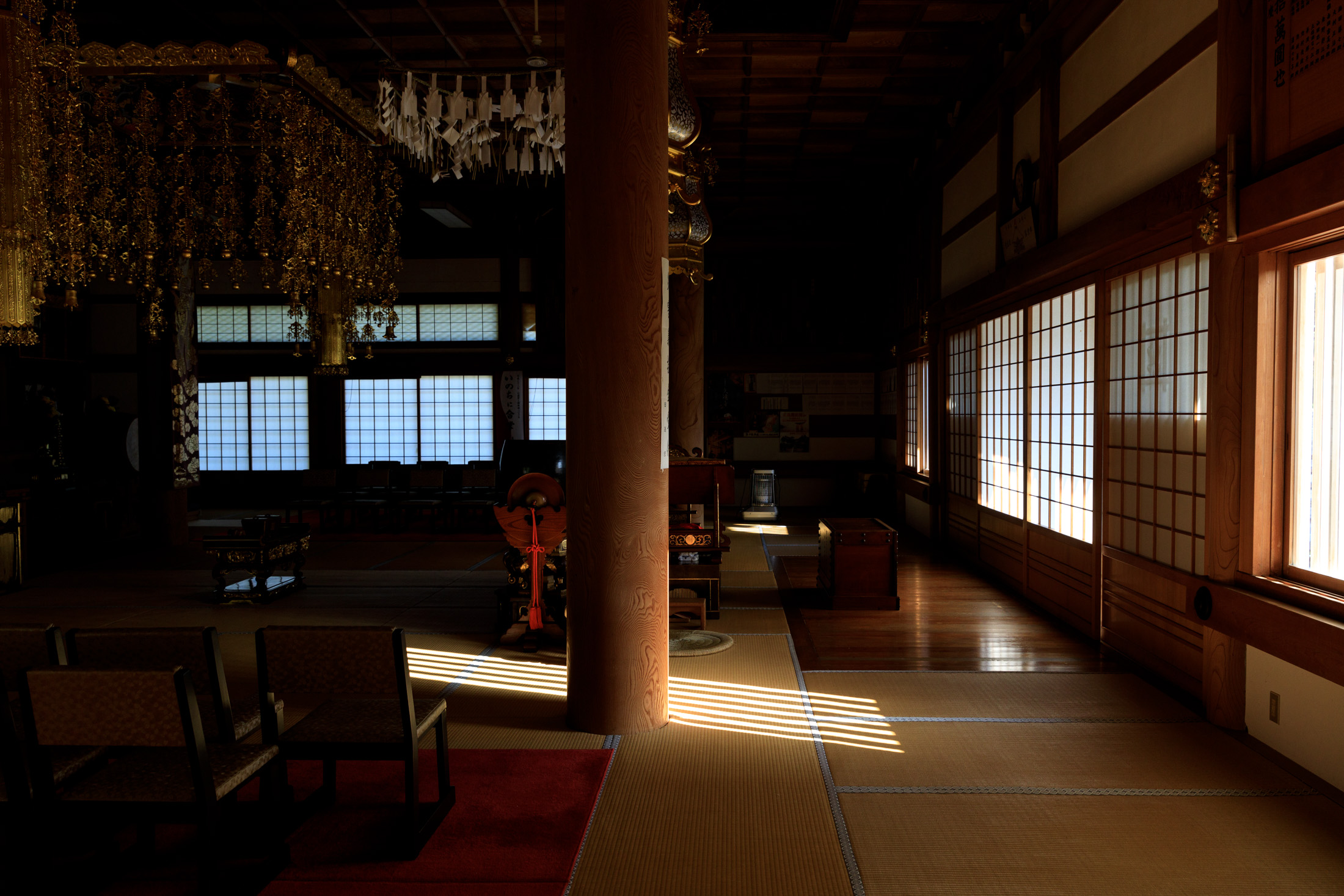
Wakago
Quite a curiosity! Otherwise, we’d never have attempted to force the old banger through the island’s only tunnel to visit the village of Wakago.
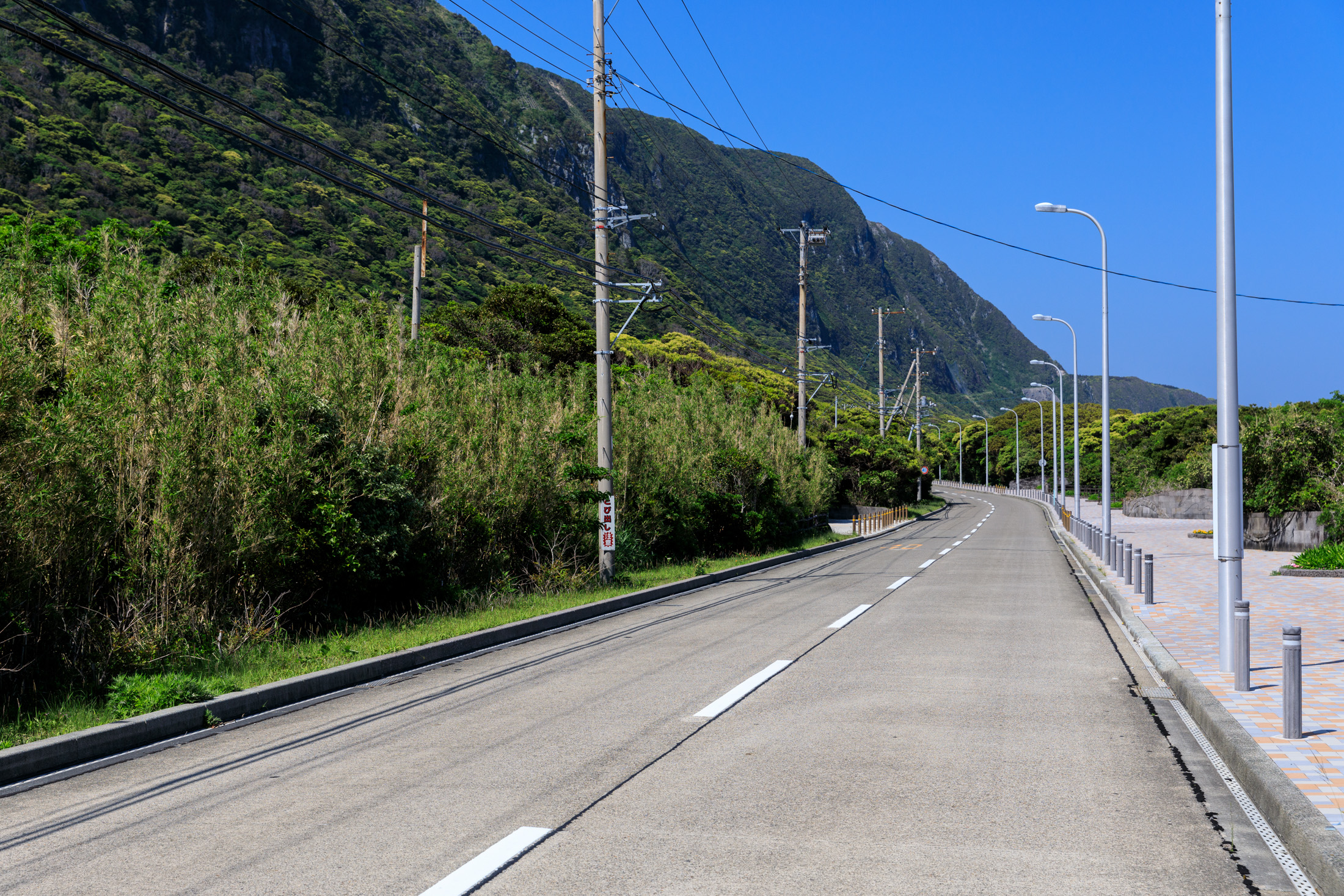
We’re greeted by this statue with its rather sombre expression. What are we doing here? Nothing. We find a shrine, a school, some houses, but that’s all.

So I decide to doze awhile at the harbour …
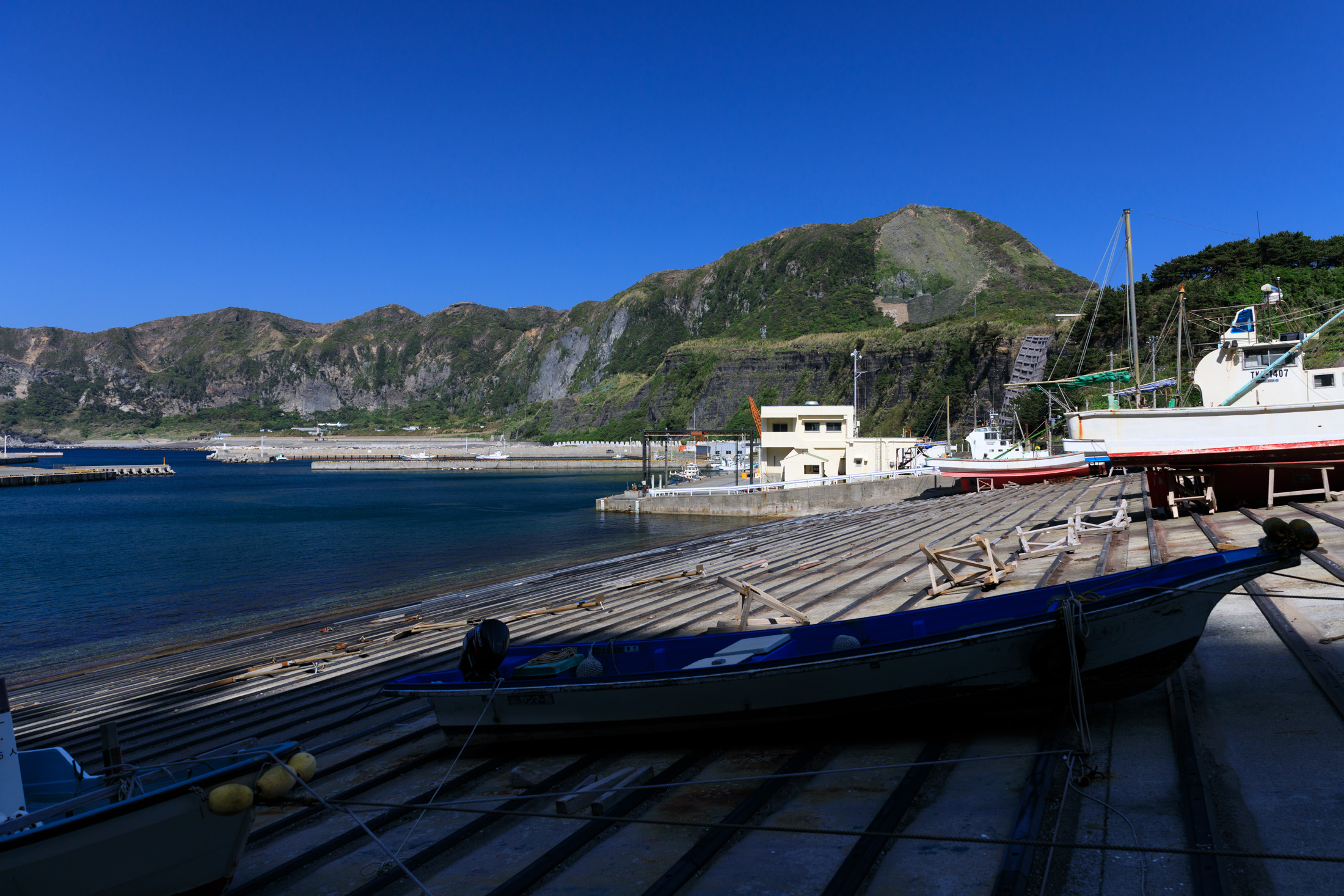
… alongside the seagulls. We won’t meet anyone else in Wakago.
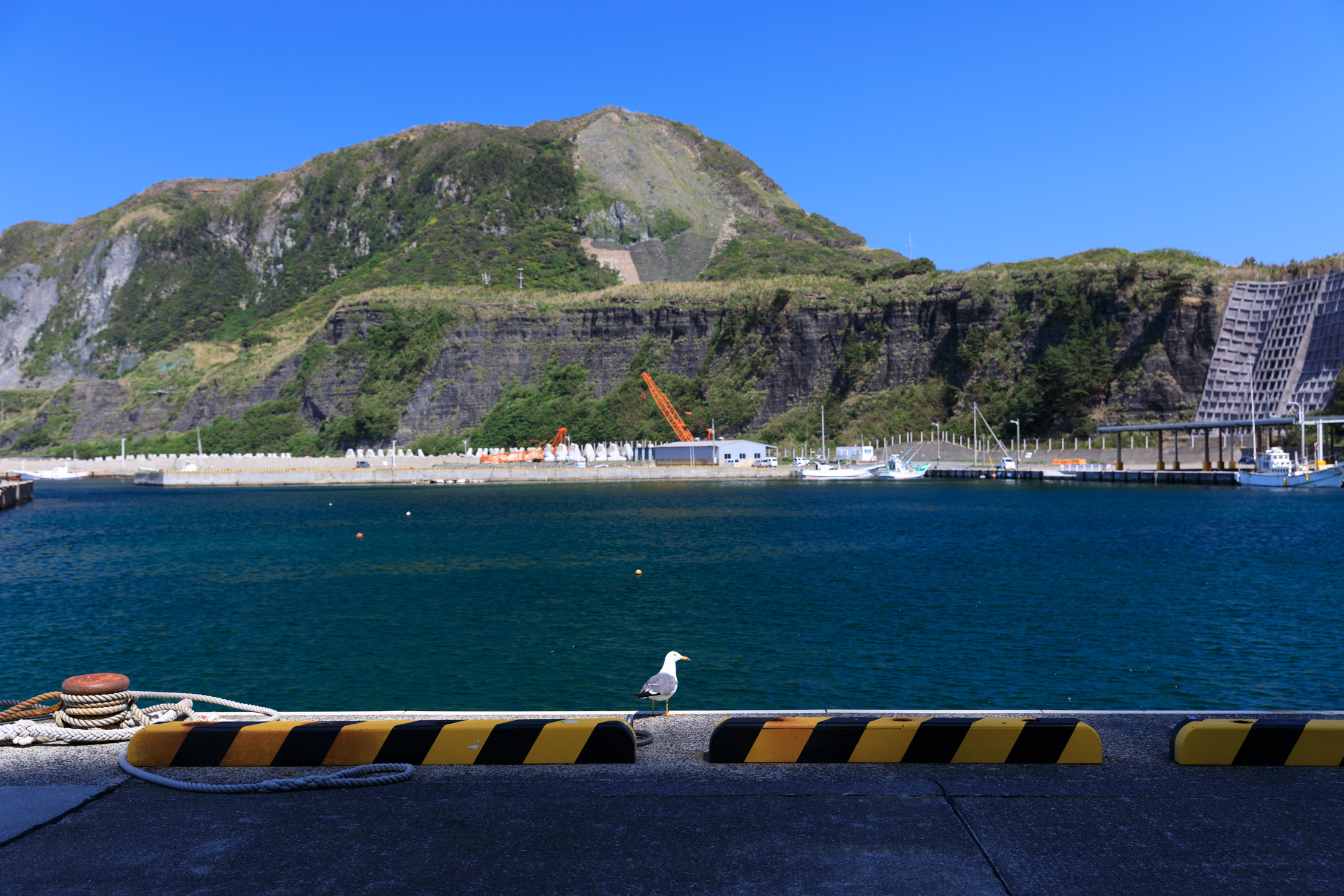
Habushiura coast
We still have the island’s most iconic sites to visit! Where all the beach bums, campers and surfers meet: Habushiura.
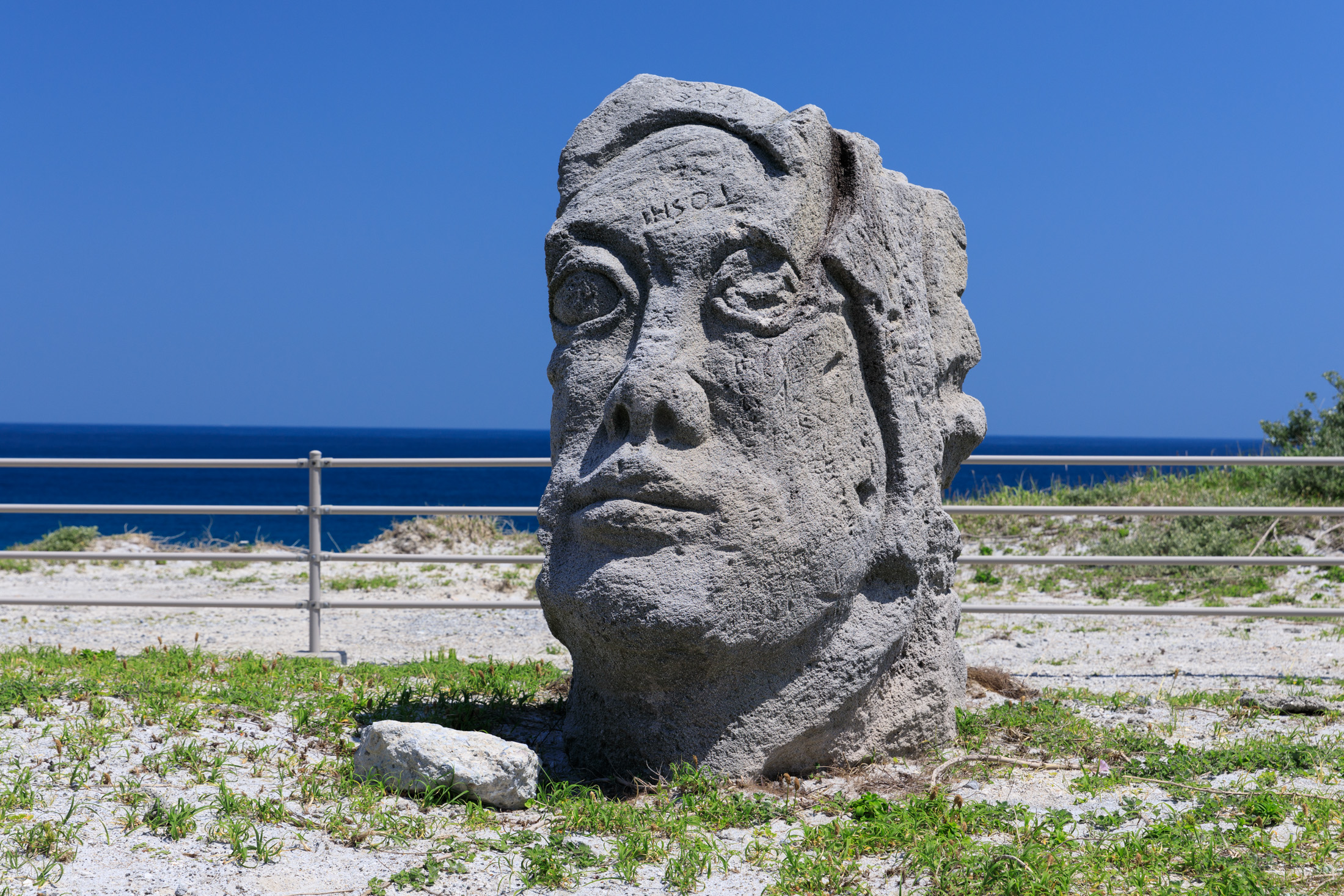
The beach is extremely beautiful, but no one is there today. I’m looking out for the famous surfers’ tubes but the ocean is very calm.
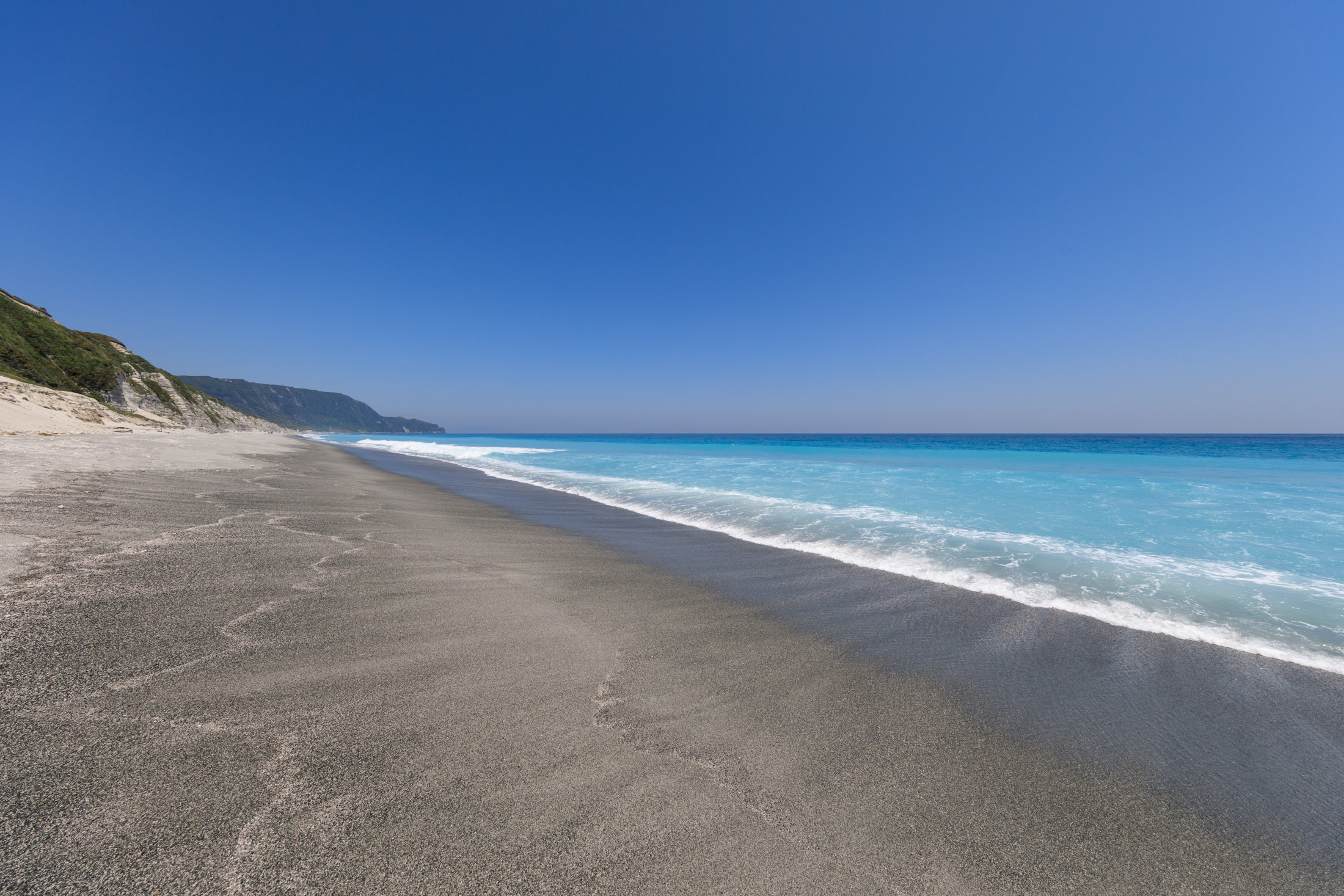

Habushiura park
Next door is the “interactive” Habushiura park. Sounds very 90s to me, but there’s nothing particularly interactive or special to do. But you’ll find this very attractive couple.
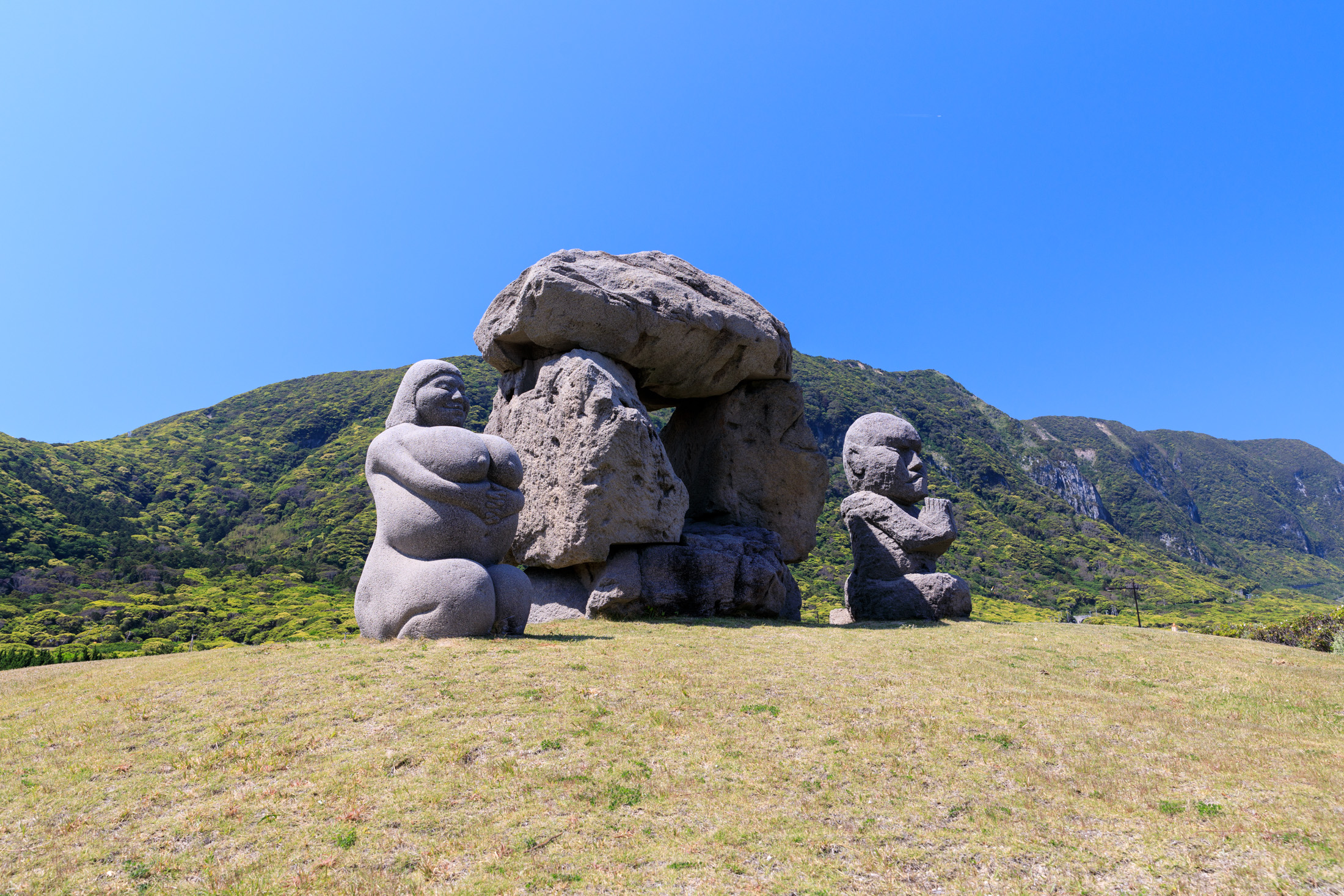
The park is quite large, with a few tables, and some strange rocks. The island sure is ready for an intensive influx of beach bums.
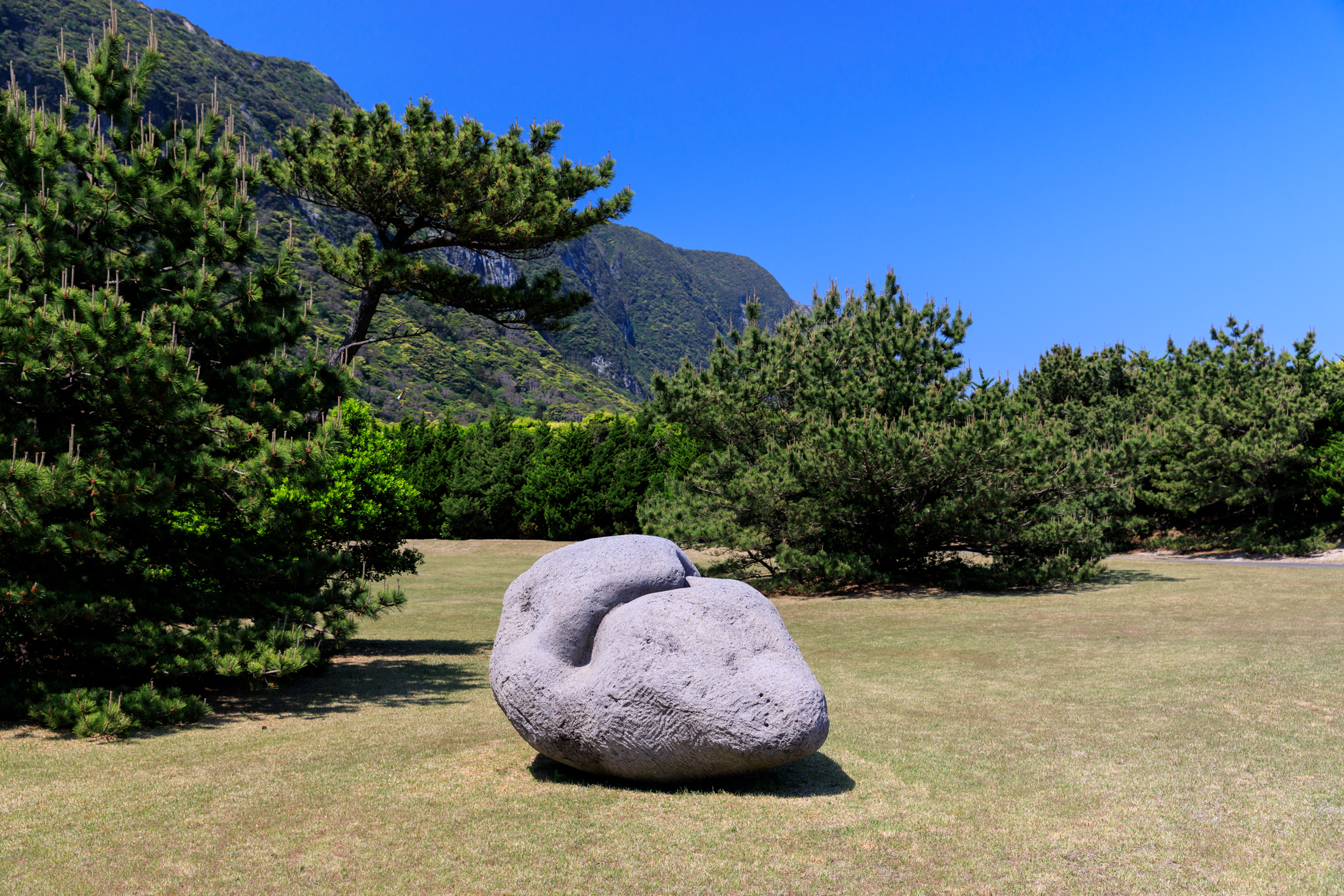
The white cliffs
Secret, as it’s known here in Niijima, is a beach south of Habushiura. I’ve visited hundreds of beaches in Japan, from Hokkaido to Okinawa, but none of them can match this one for peace, purity and beauty.

Shiro-mama, the famous white cliffs, are accessible on foot. This part of the island is in fact off-limits. I soon understood why …
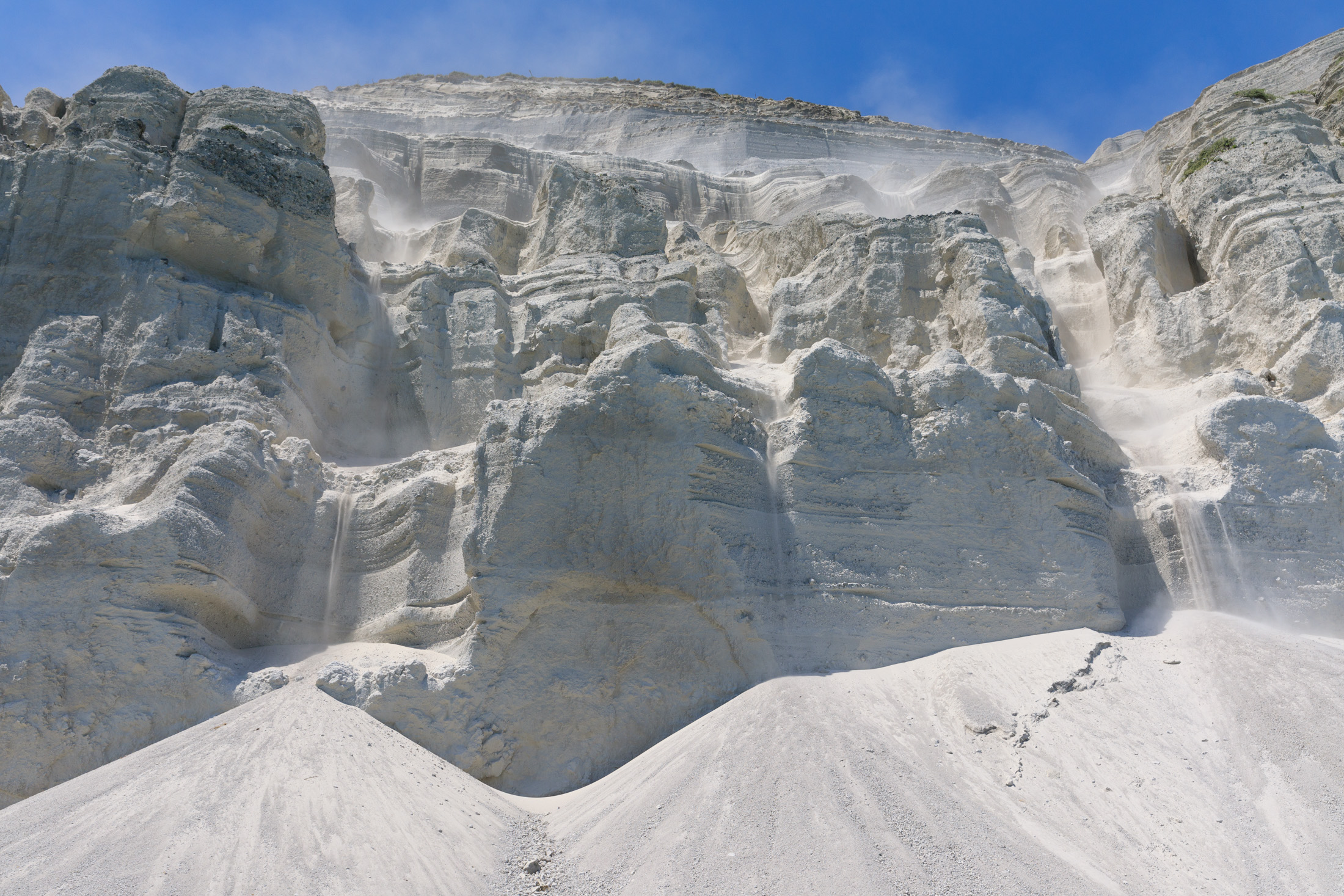
… the cliff is crumbling! 😵
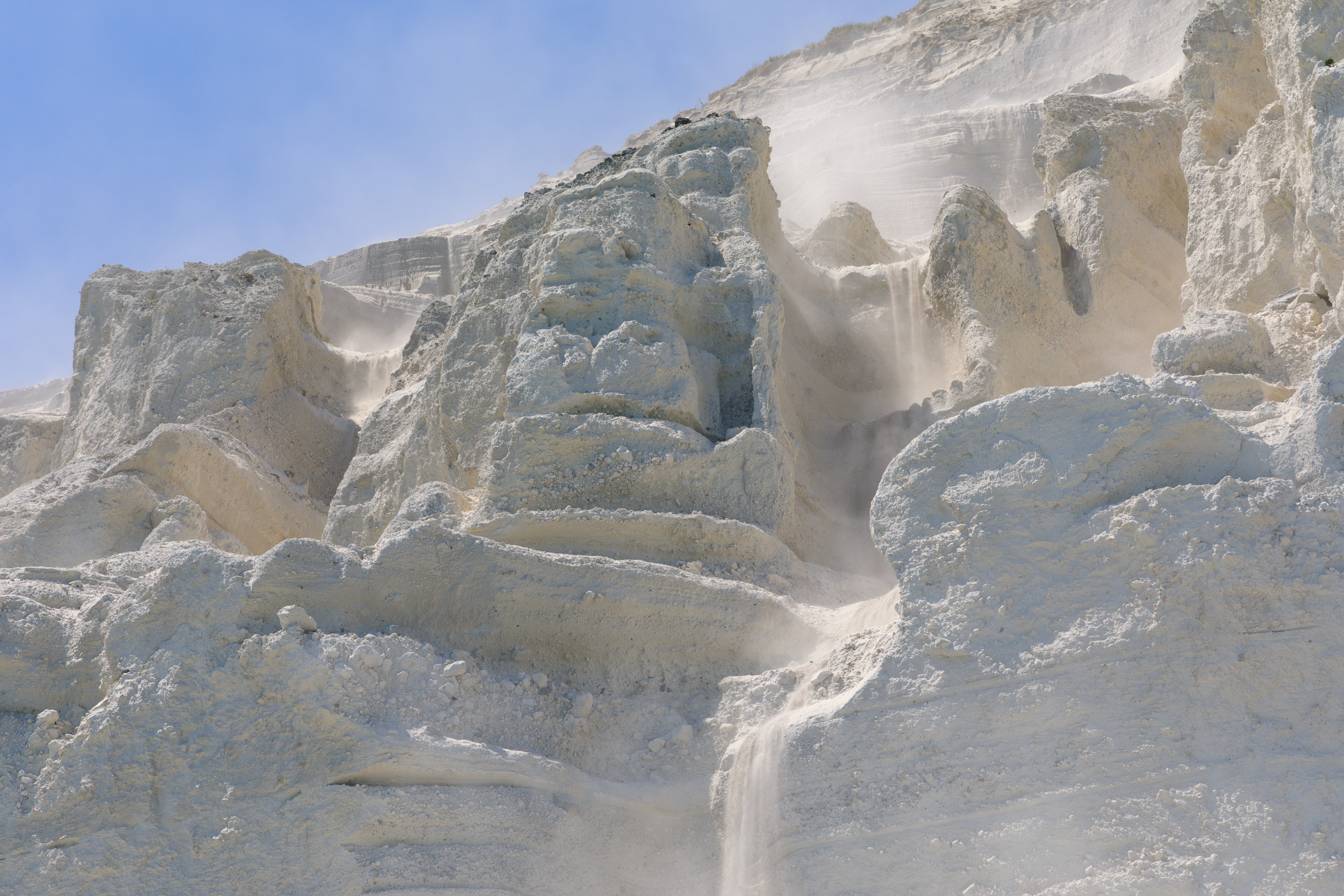
The forces of nature (rain, wind, waves …), are continually bringing down cascades of koga.
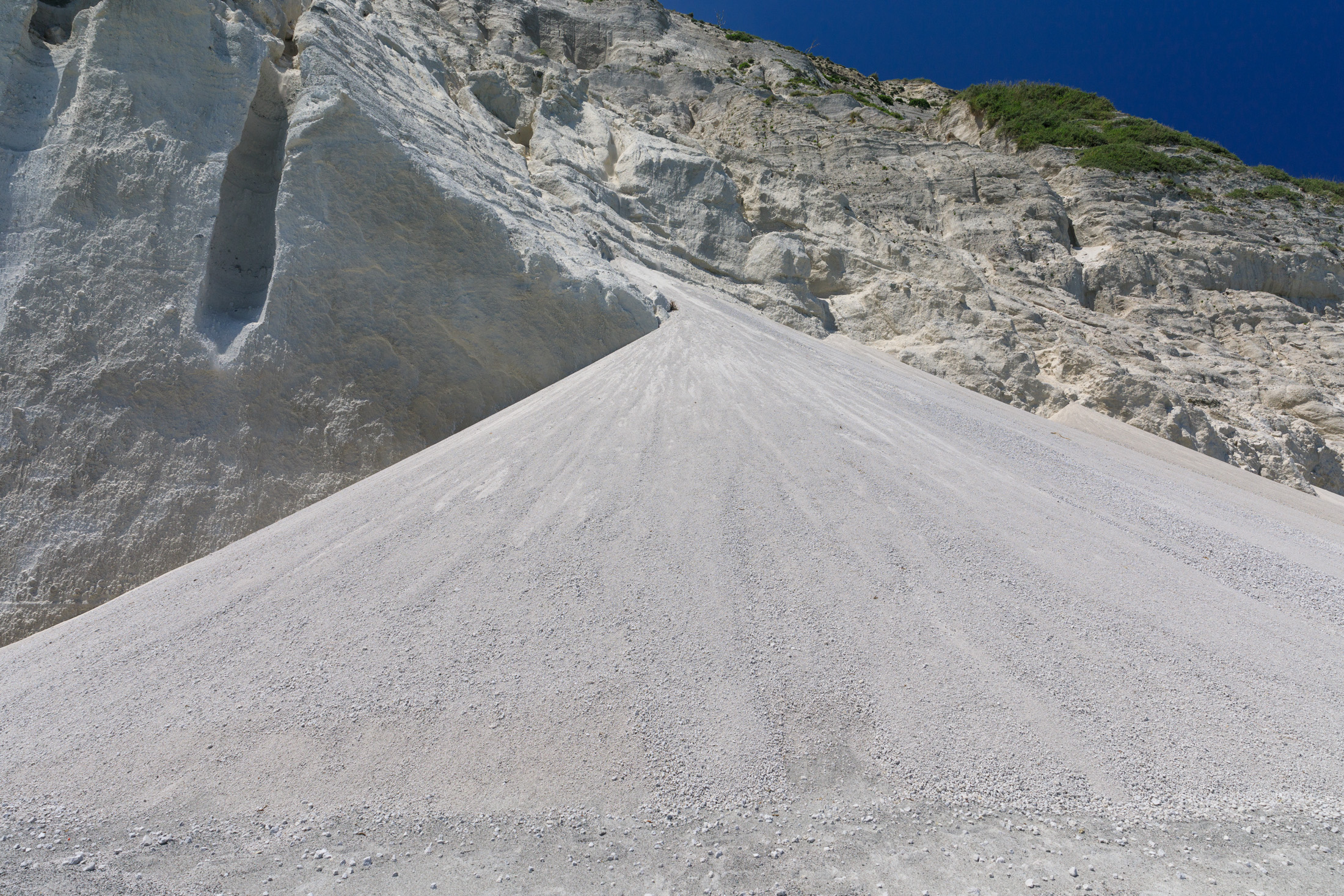
Facing this phenomenon, out in the Pacific Ocean, I spot some surfers at last. It’s the best place on the island for surfing!
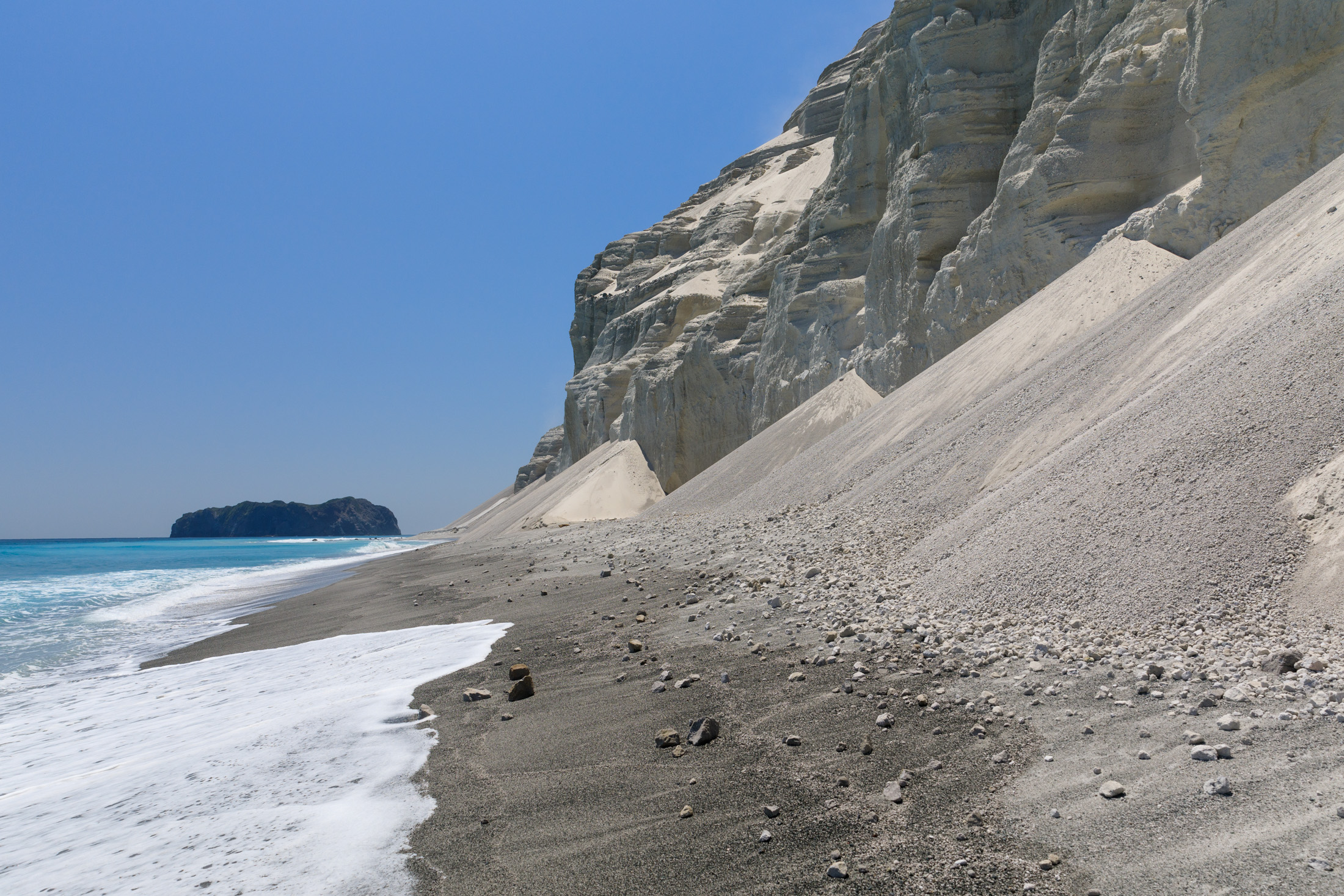
After this strange experience we linger awhile on the beach before heading for the airport. A little bird that’ll take us back to Tokyo in just 35 minutes.
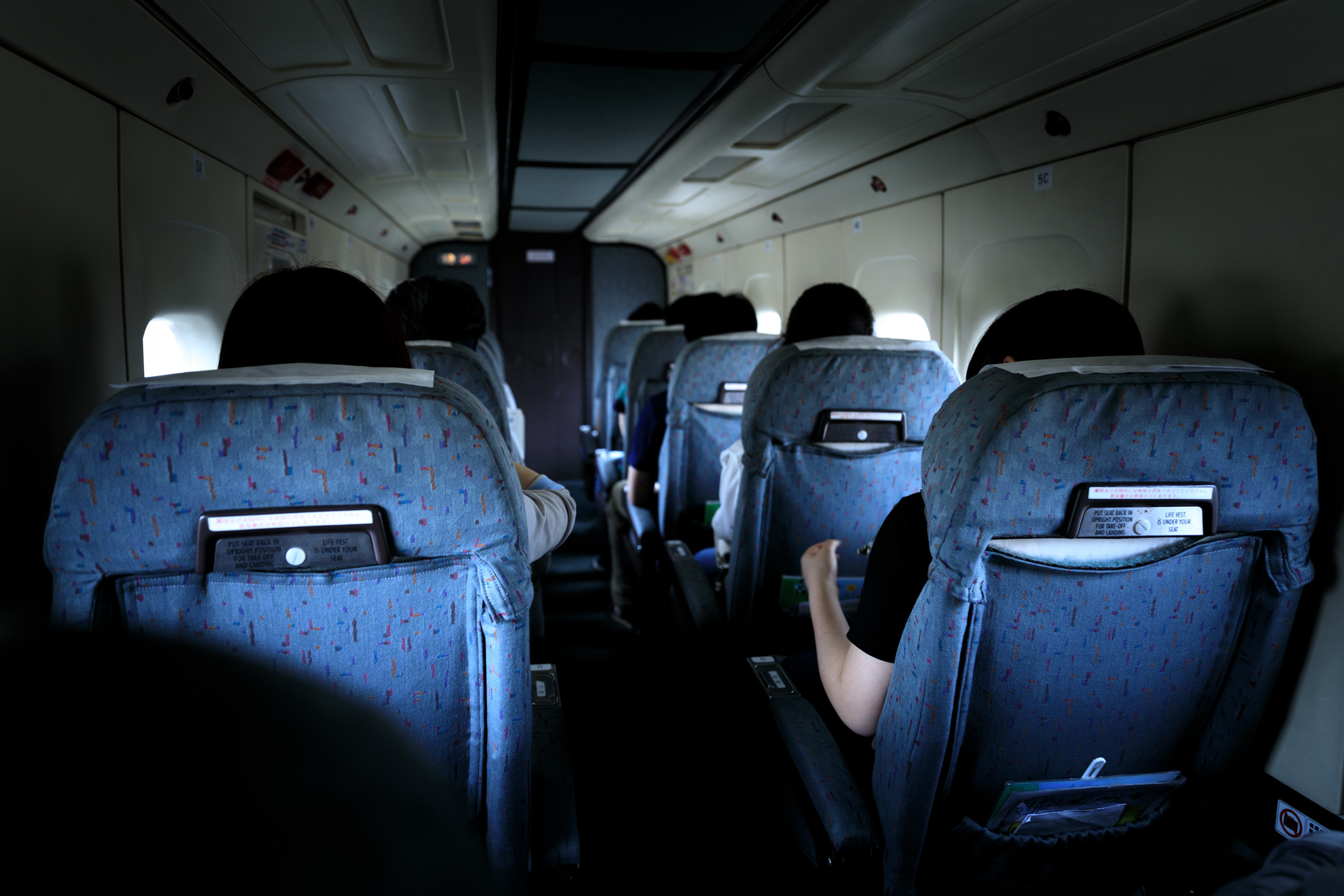
I really enjoyed myself on the island of Niijima. But I was quite surprised by the cost of the whole saga, especially as the Japanese quality we’re used to isn’t always available: it’s a luxury in name only. But there’s an alternative, more suited to Niijima: bring your tent, some food, and don’t forget the surfboard! 🏄♂️
And for more awesome content about Japan, follow Jordy Meow on Instagram ! 🎵

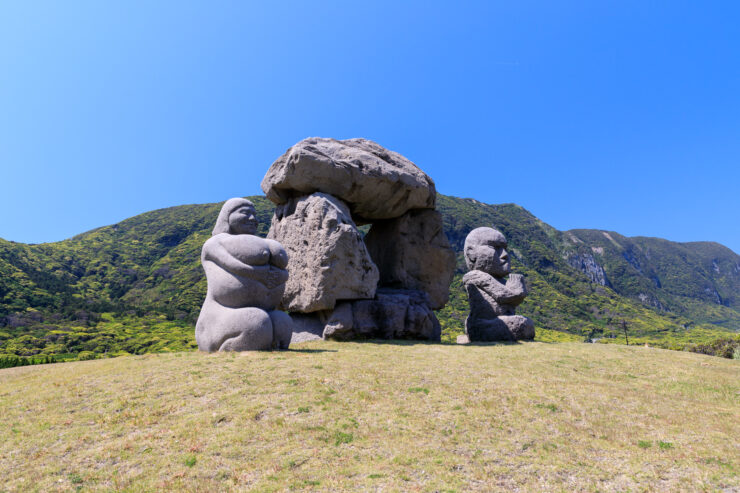
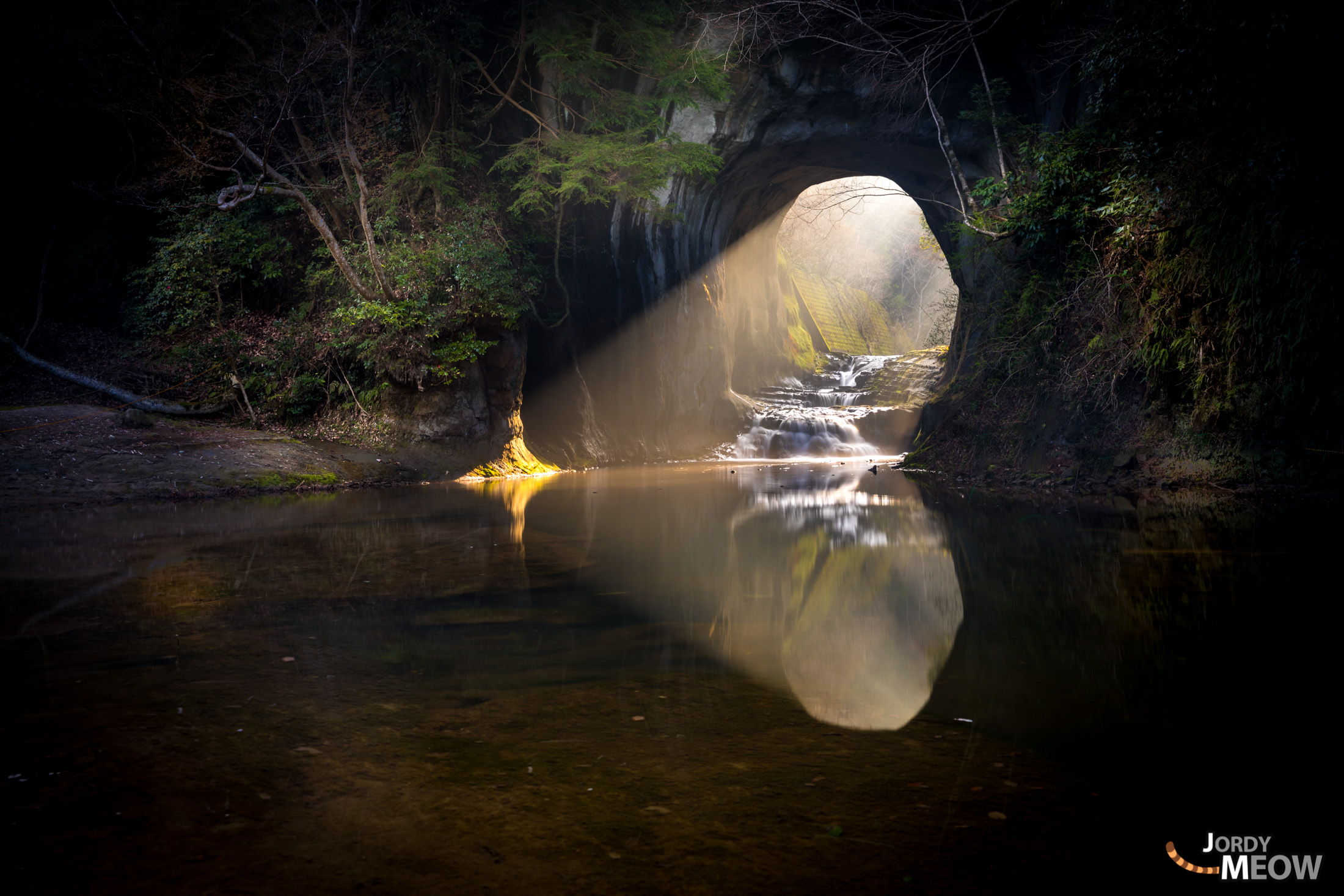
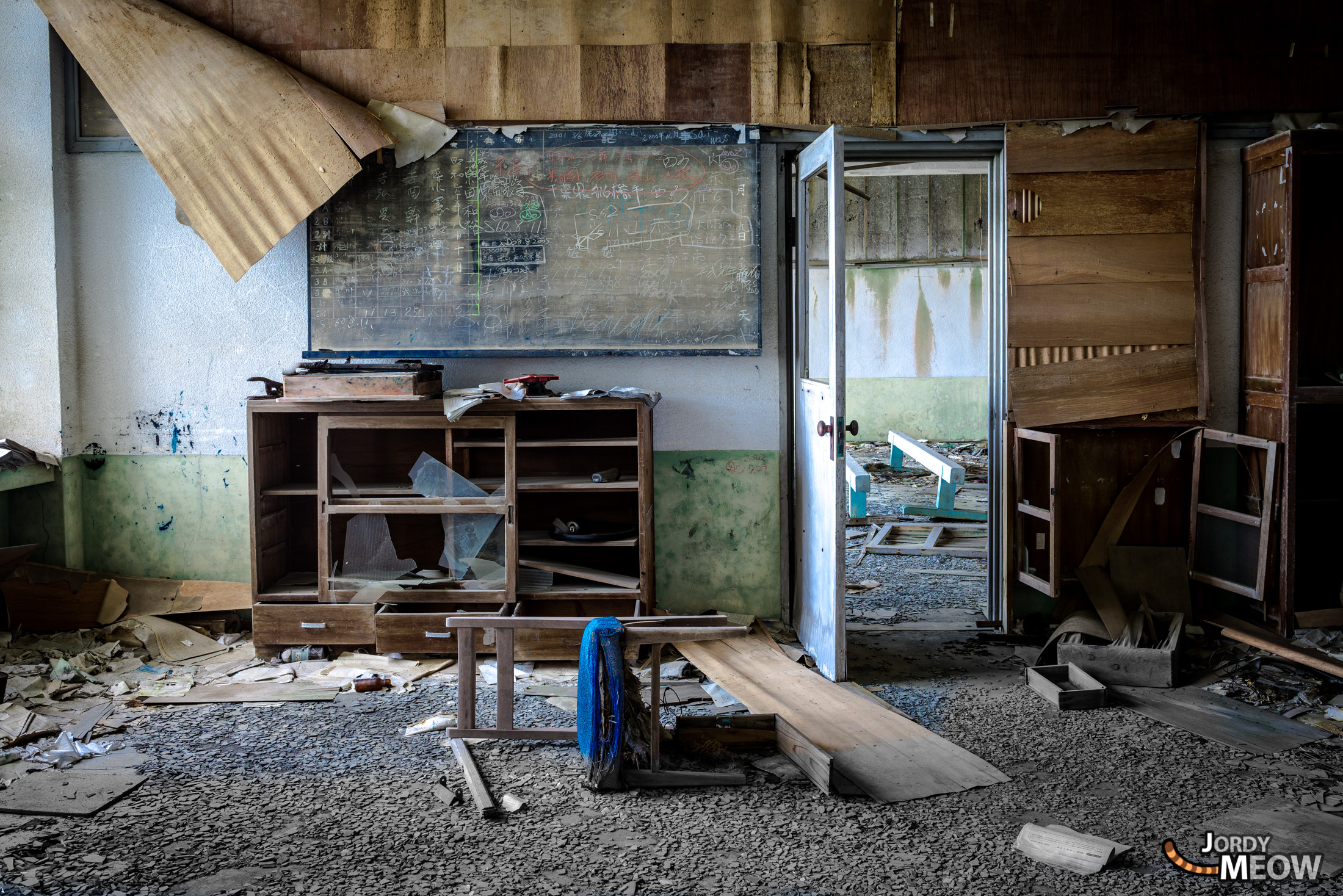
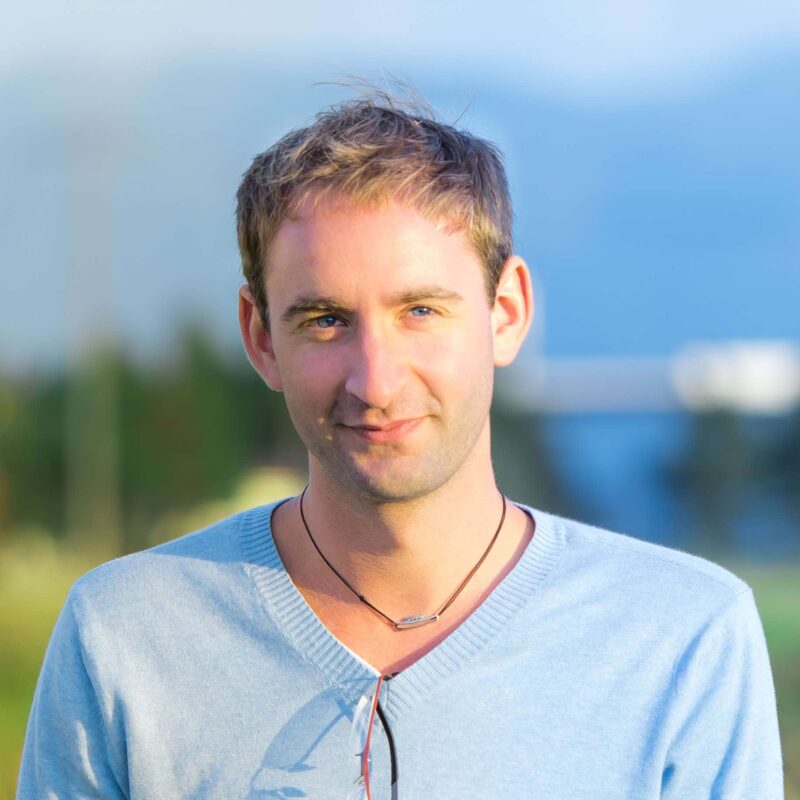










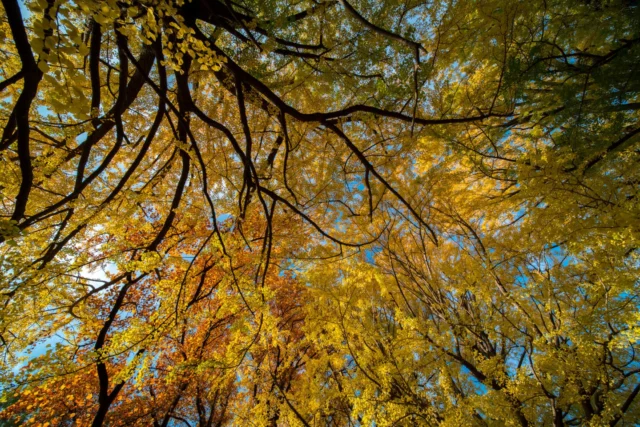

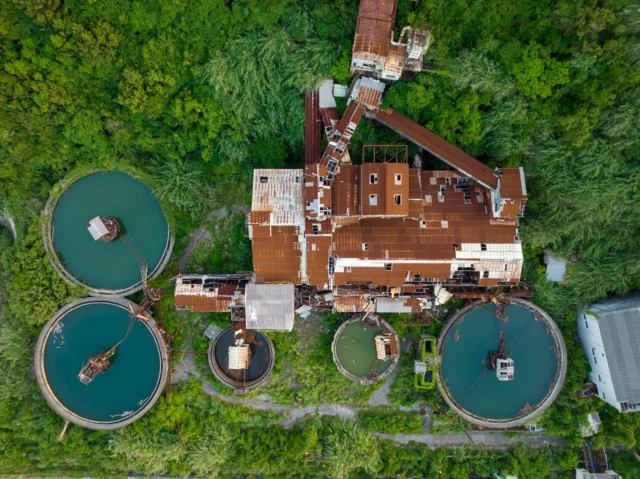
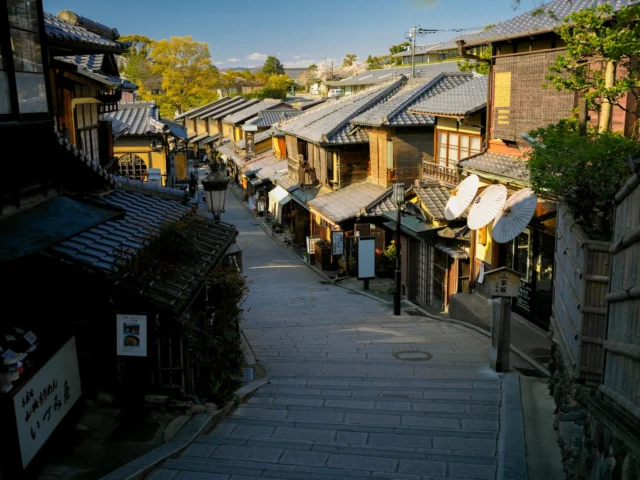
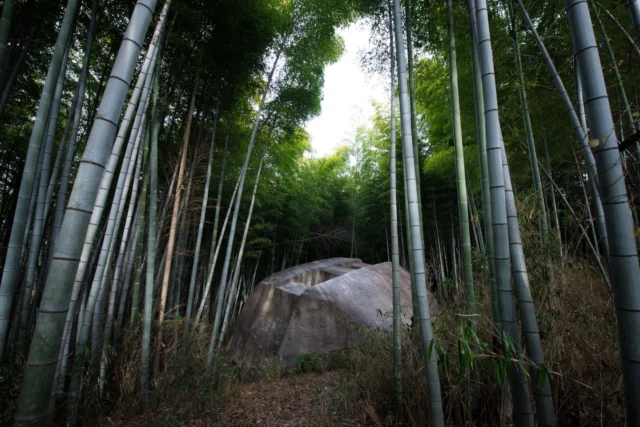
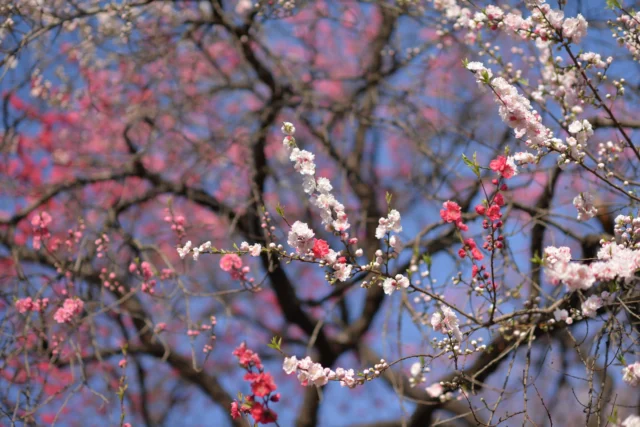
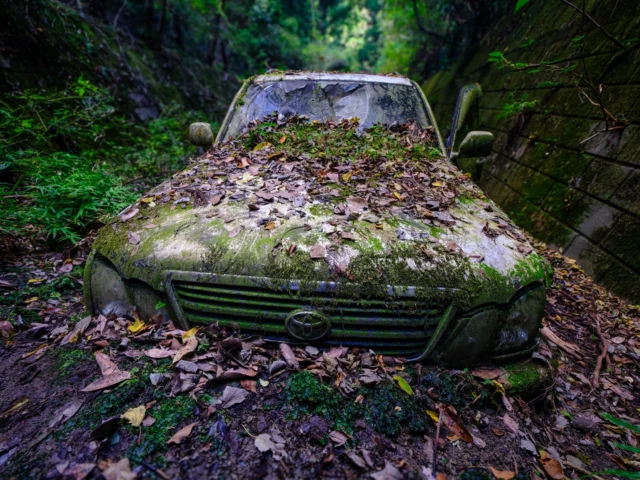

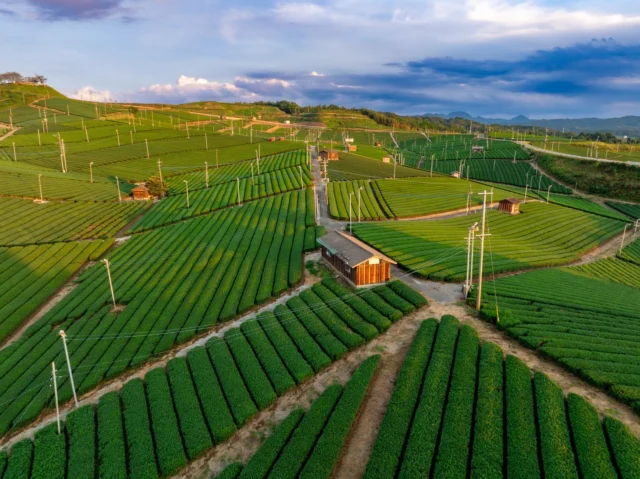
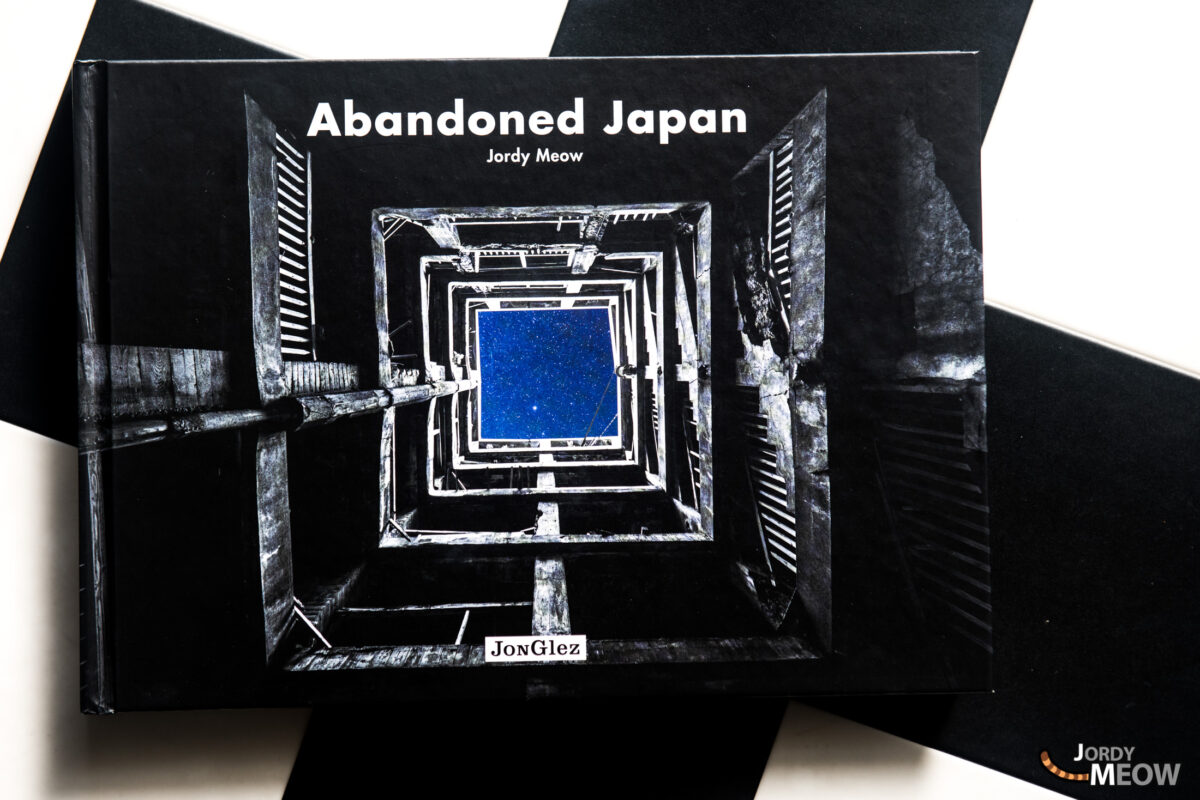

















5